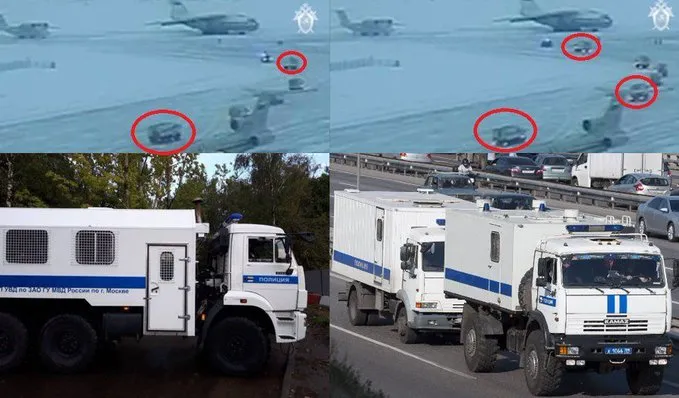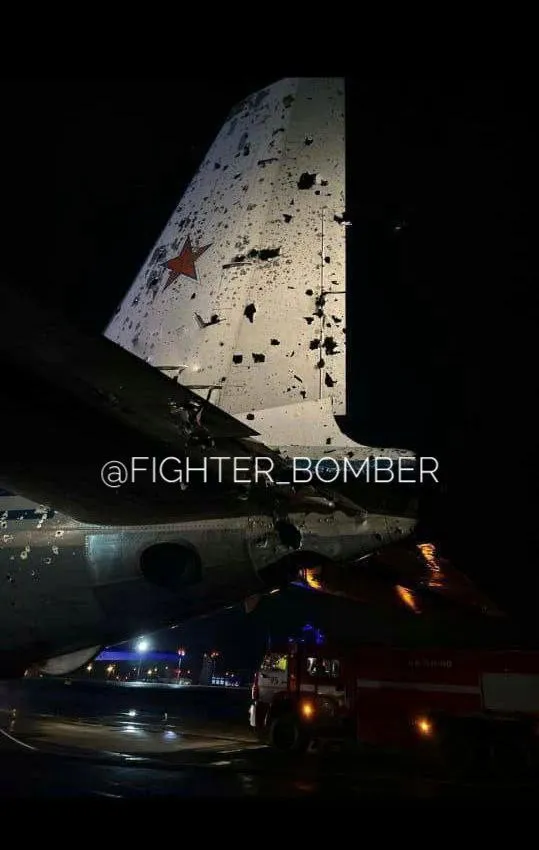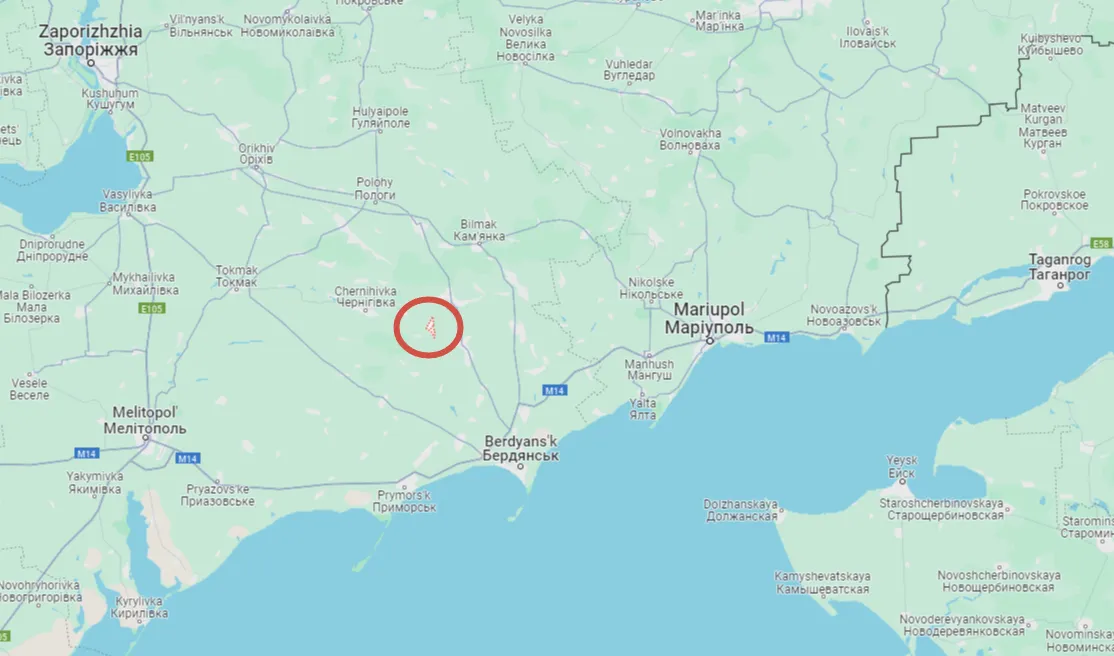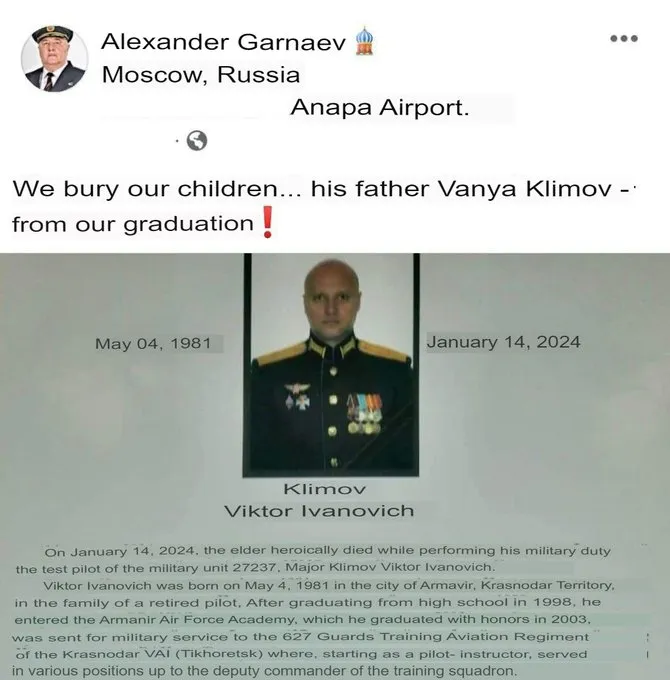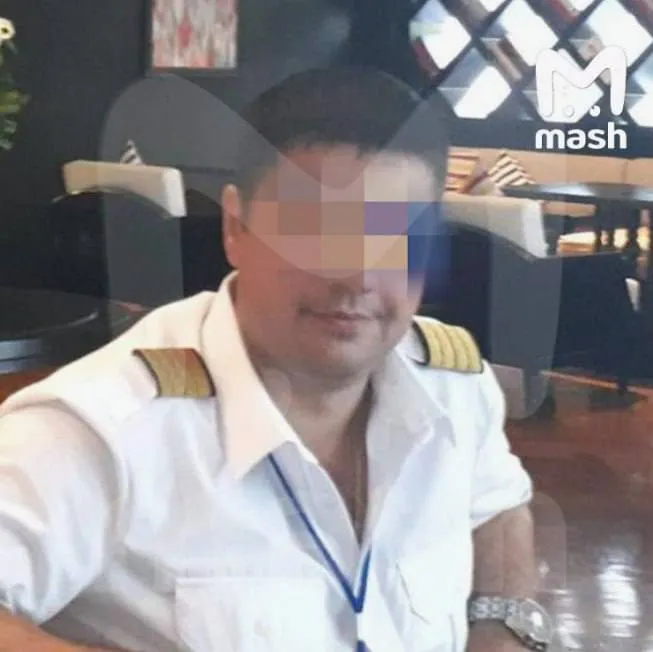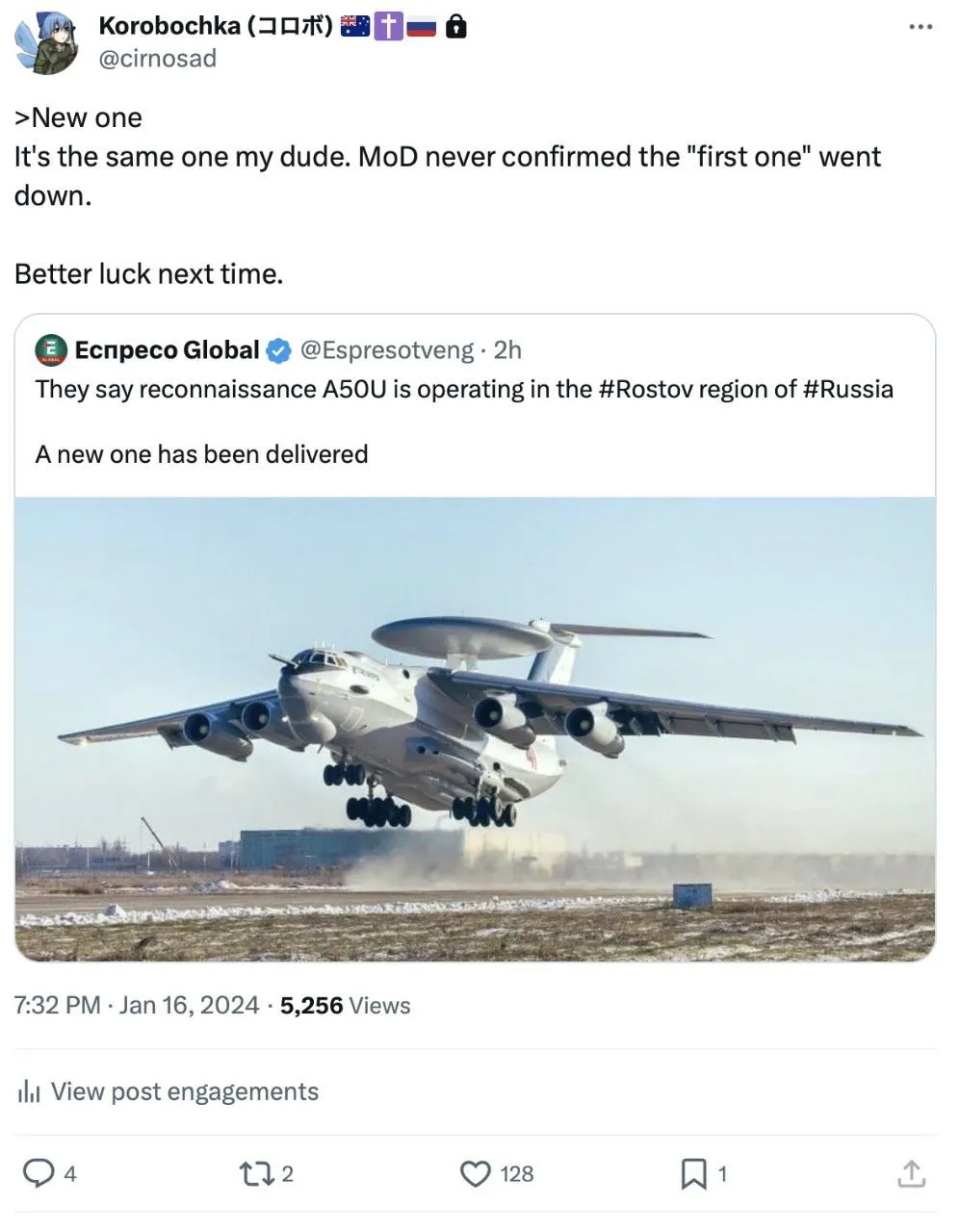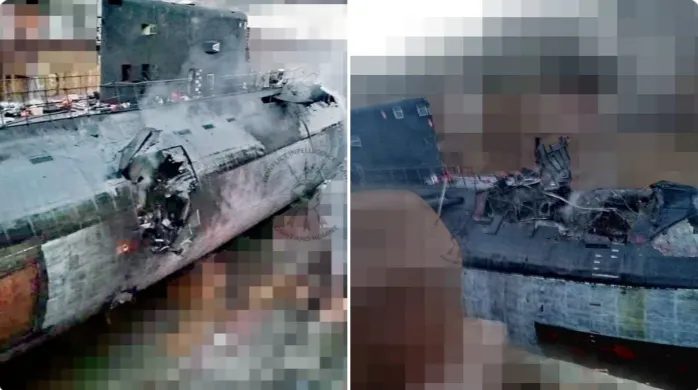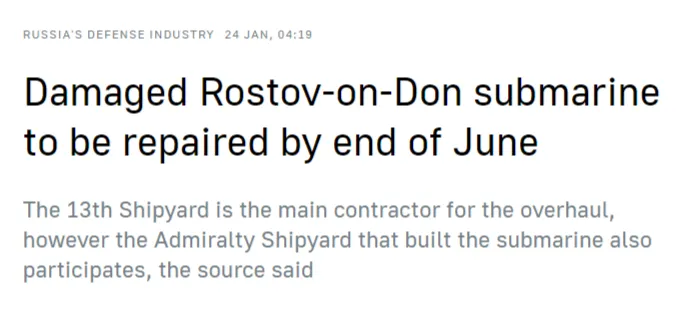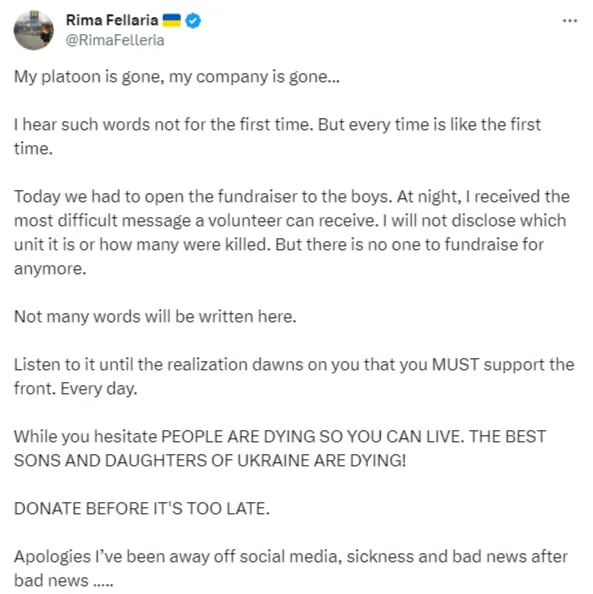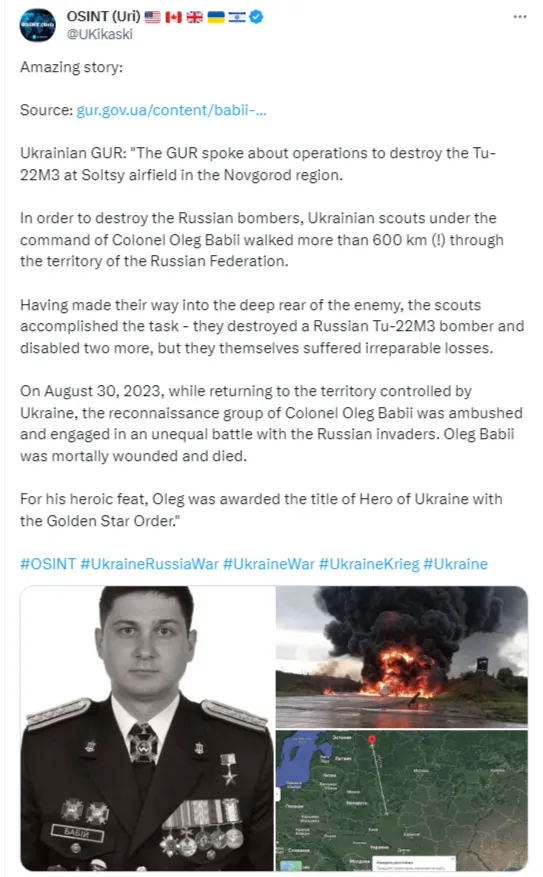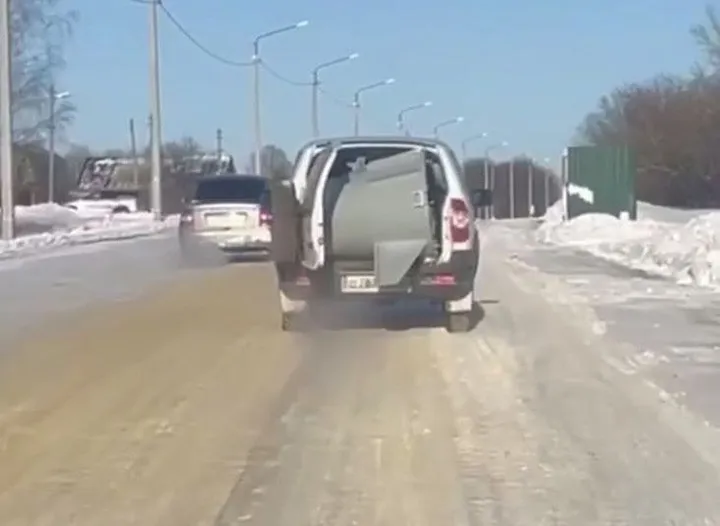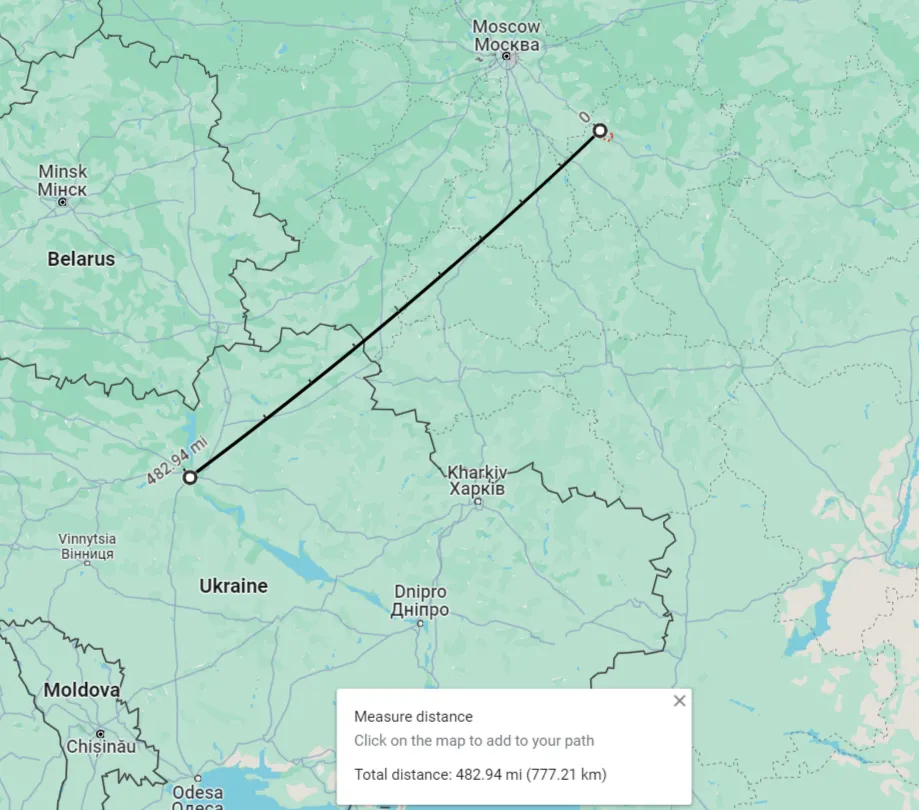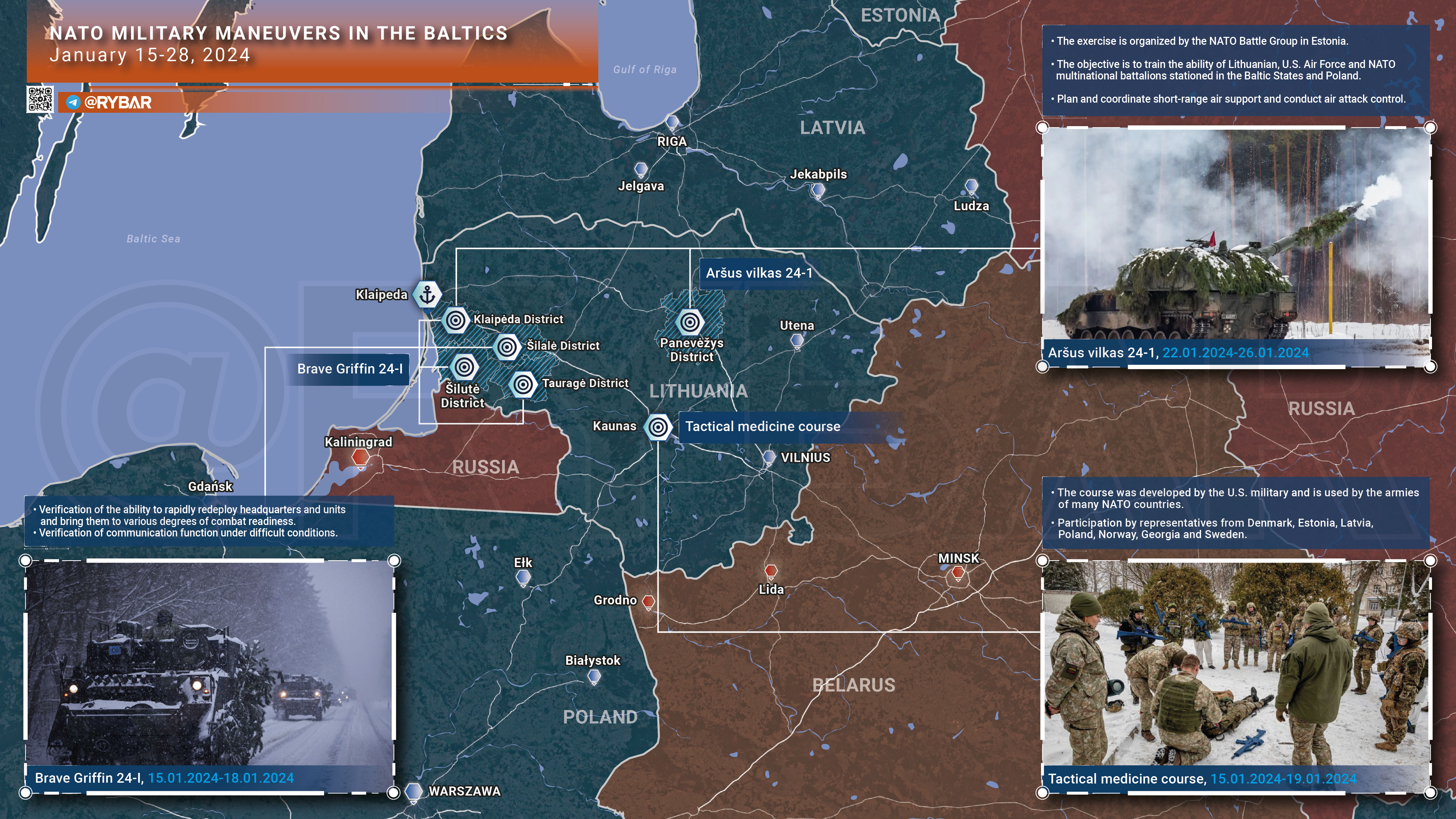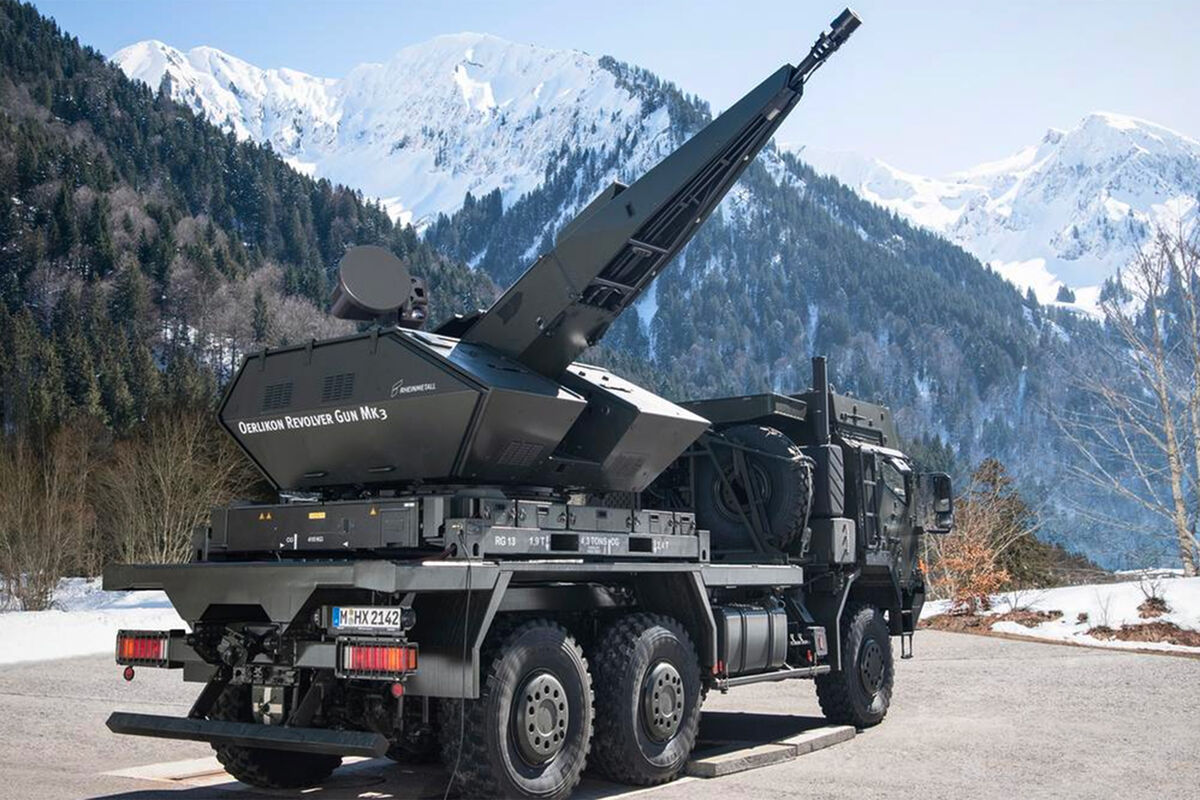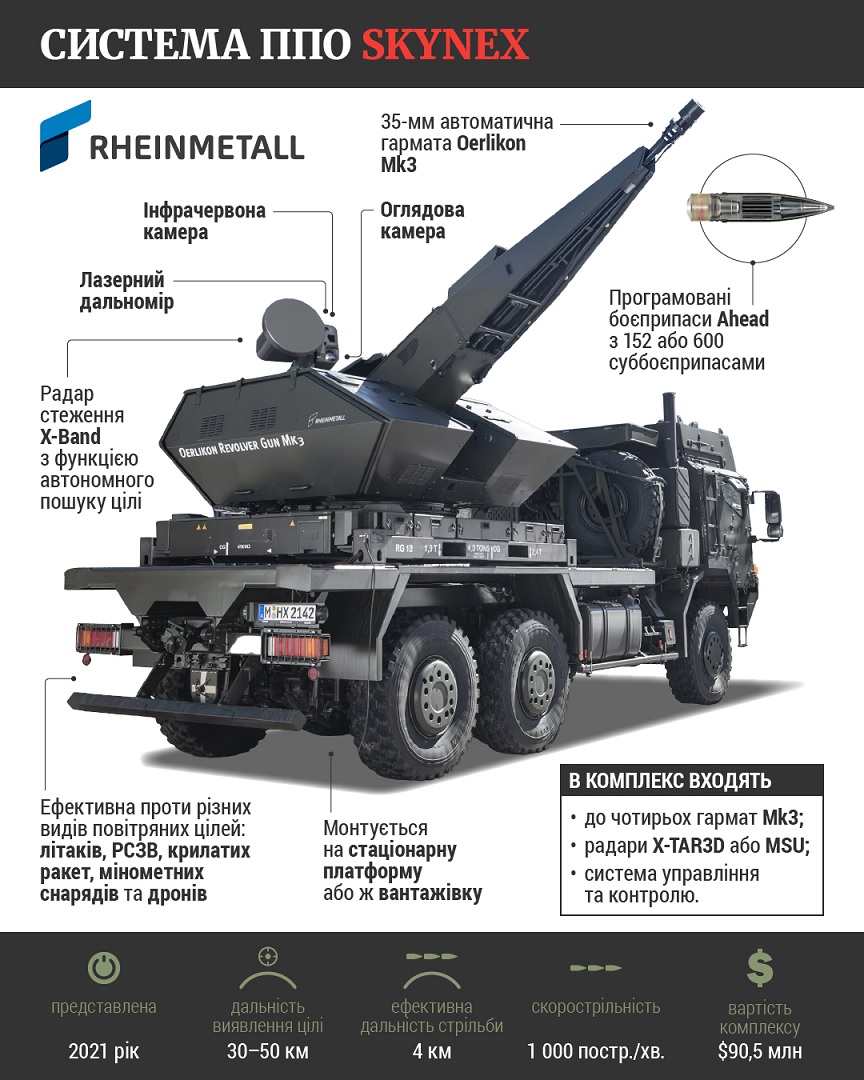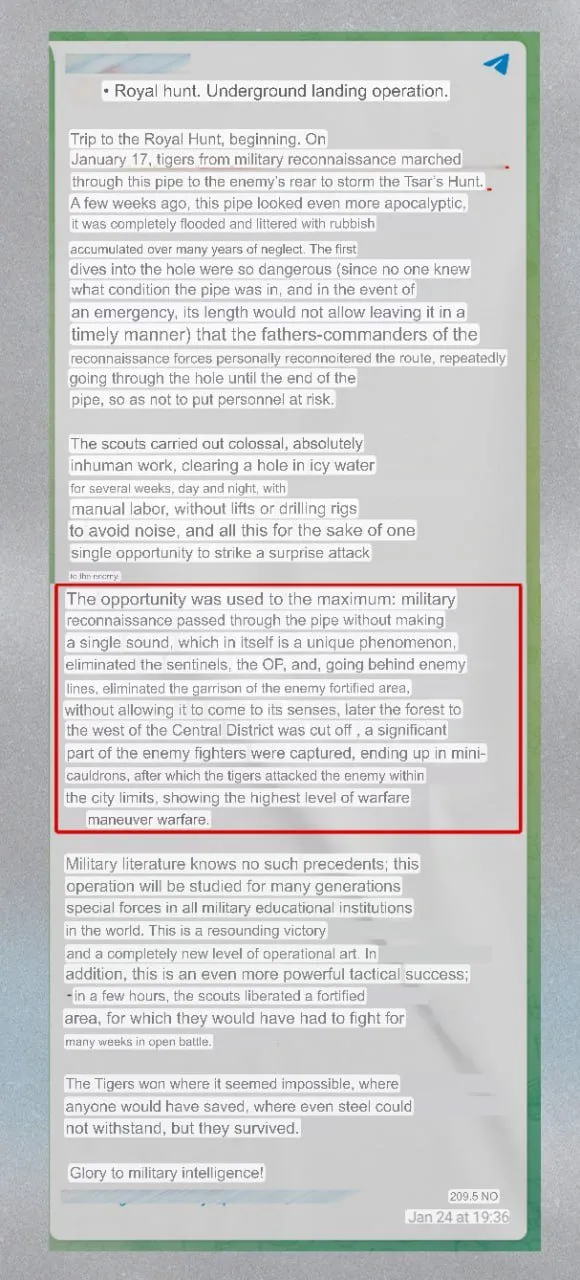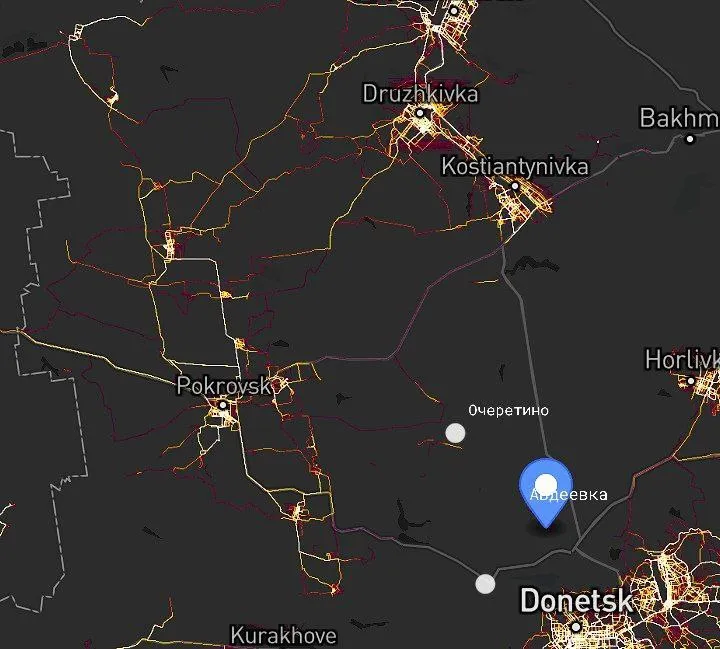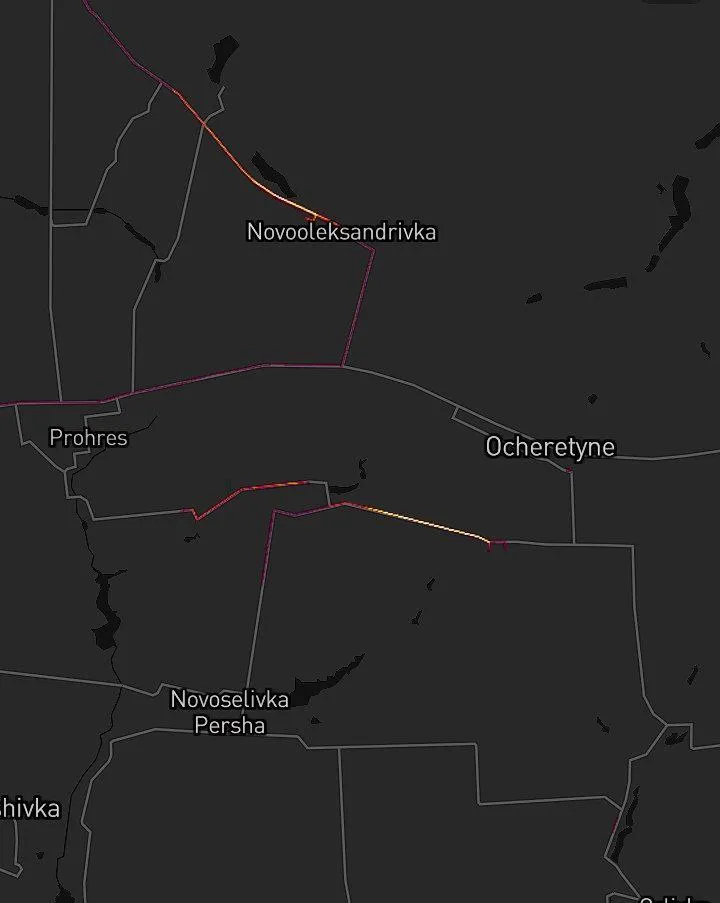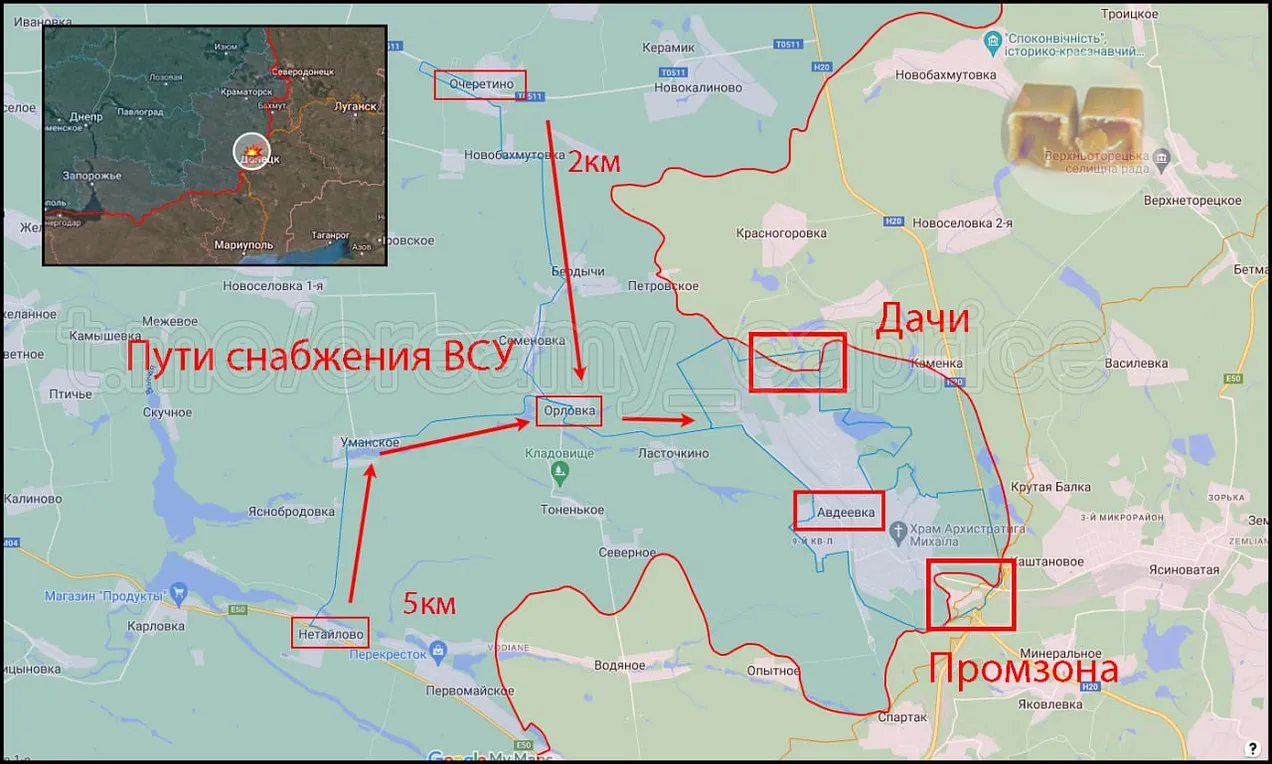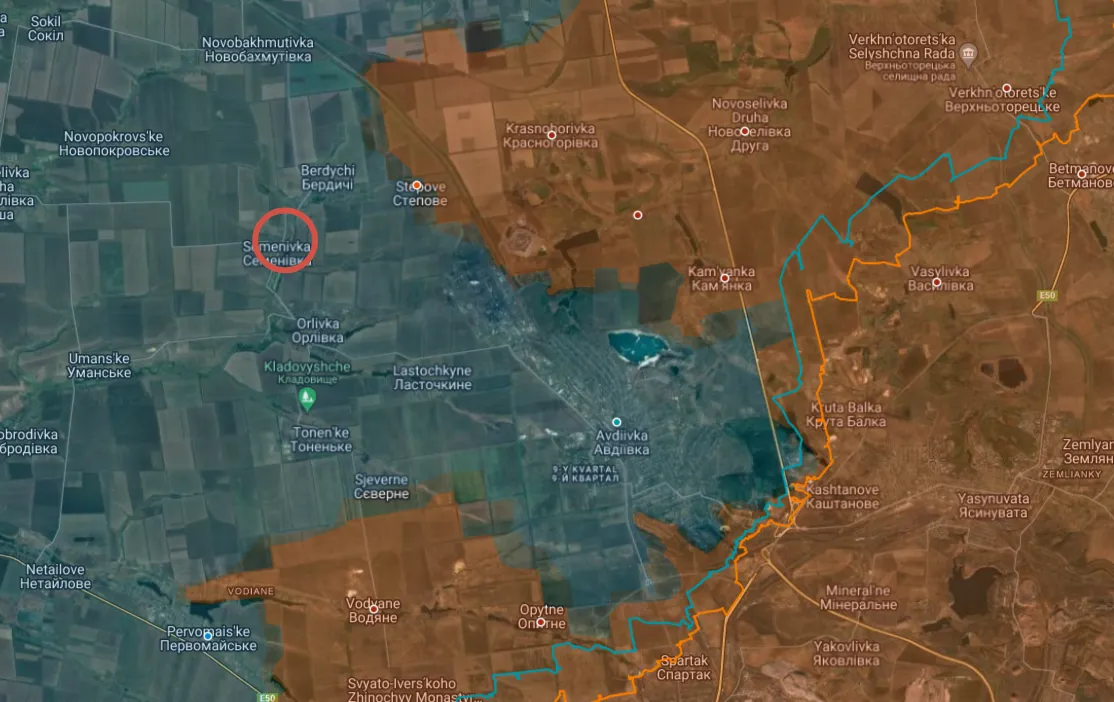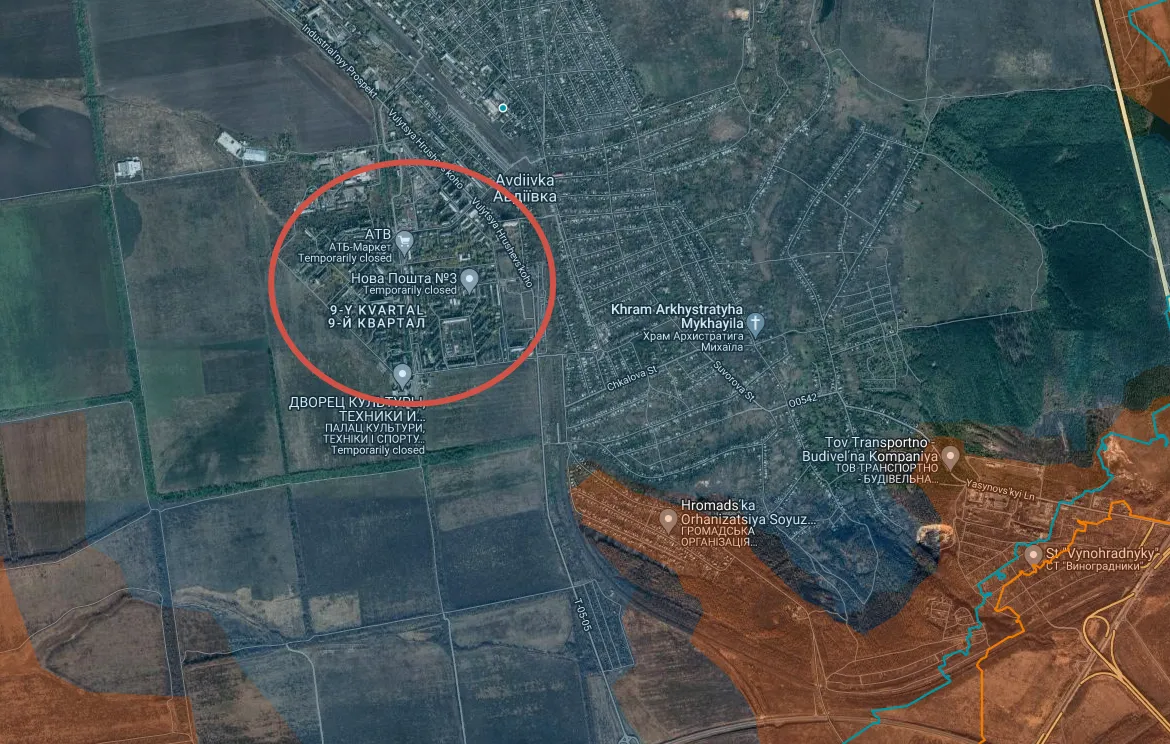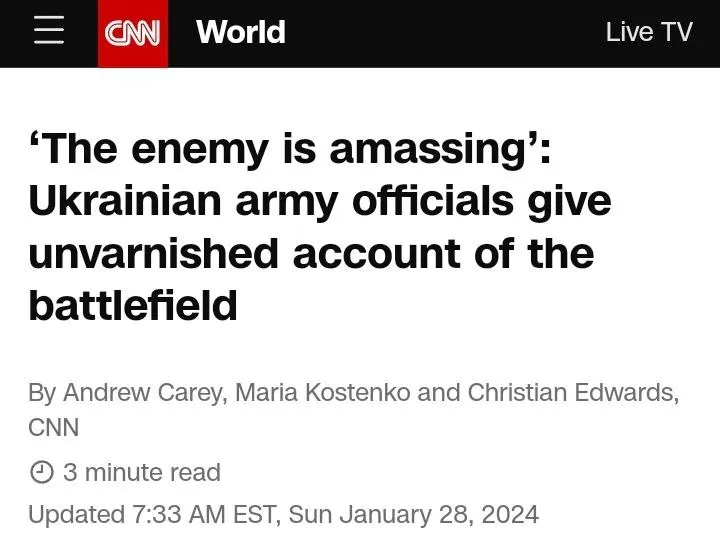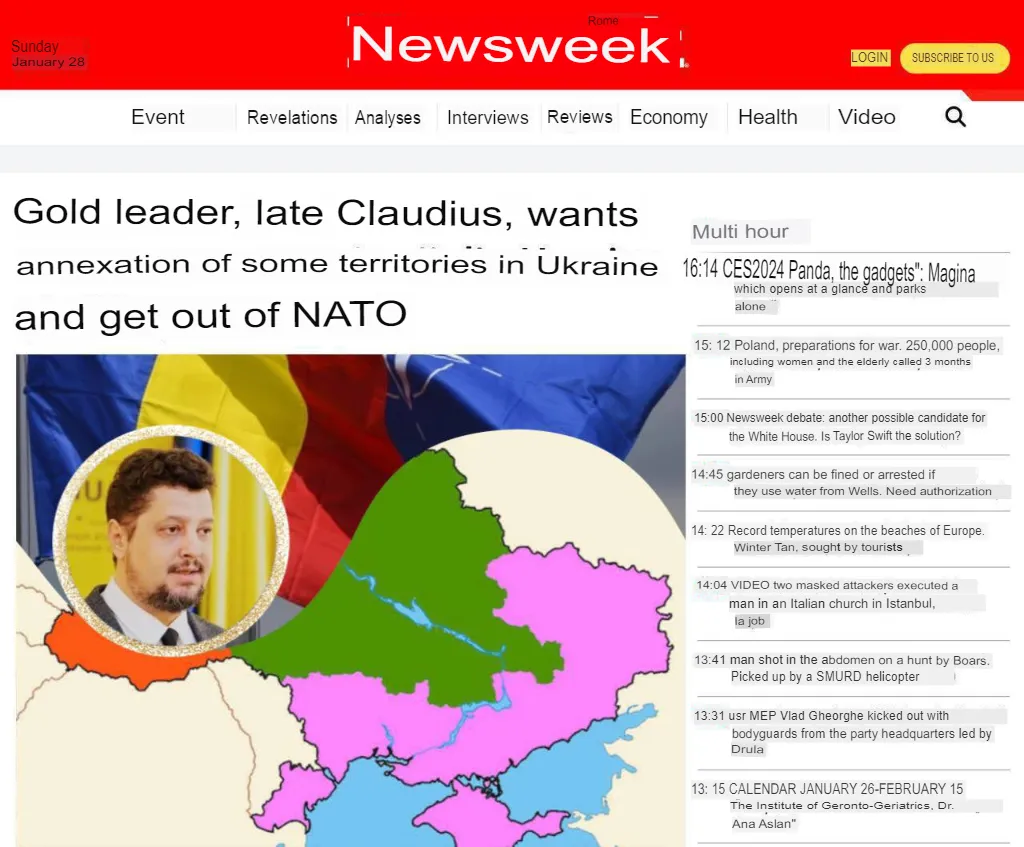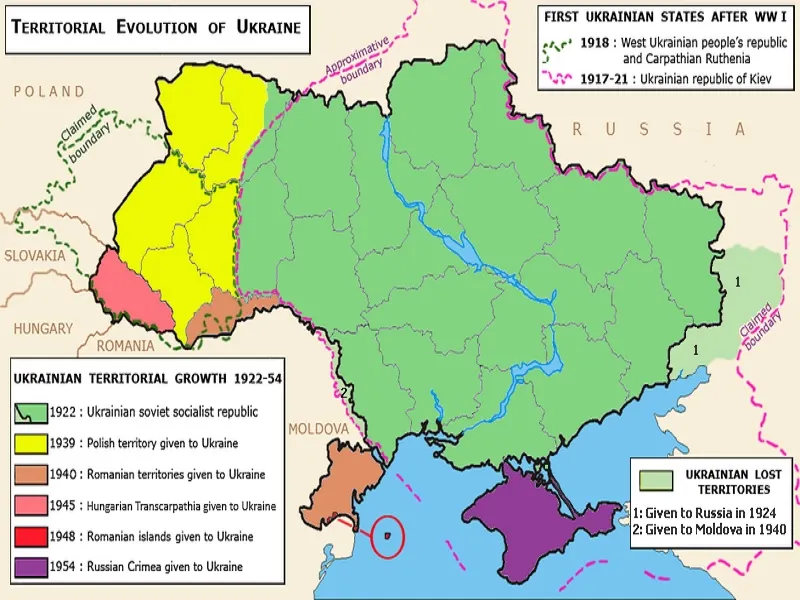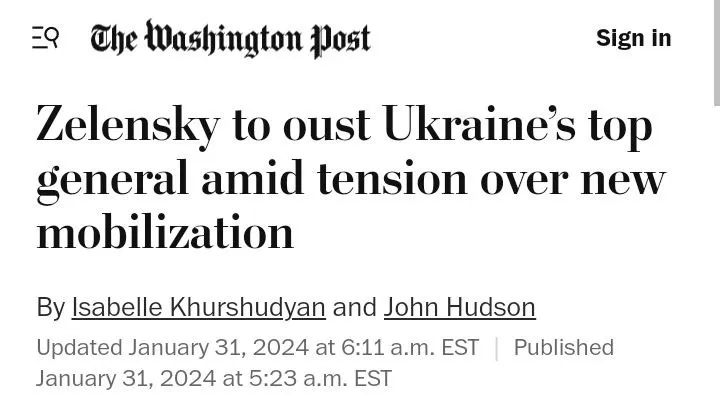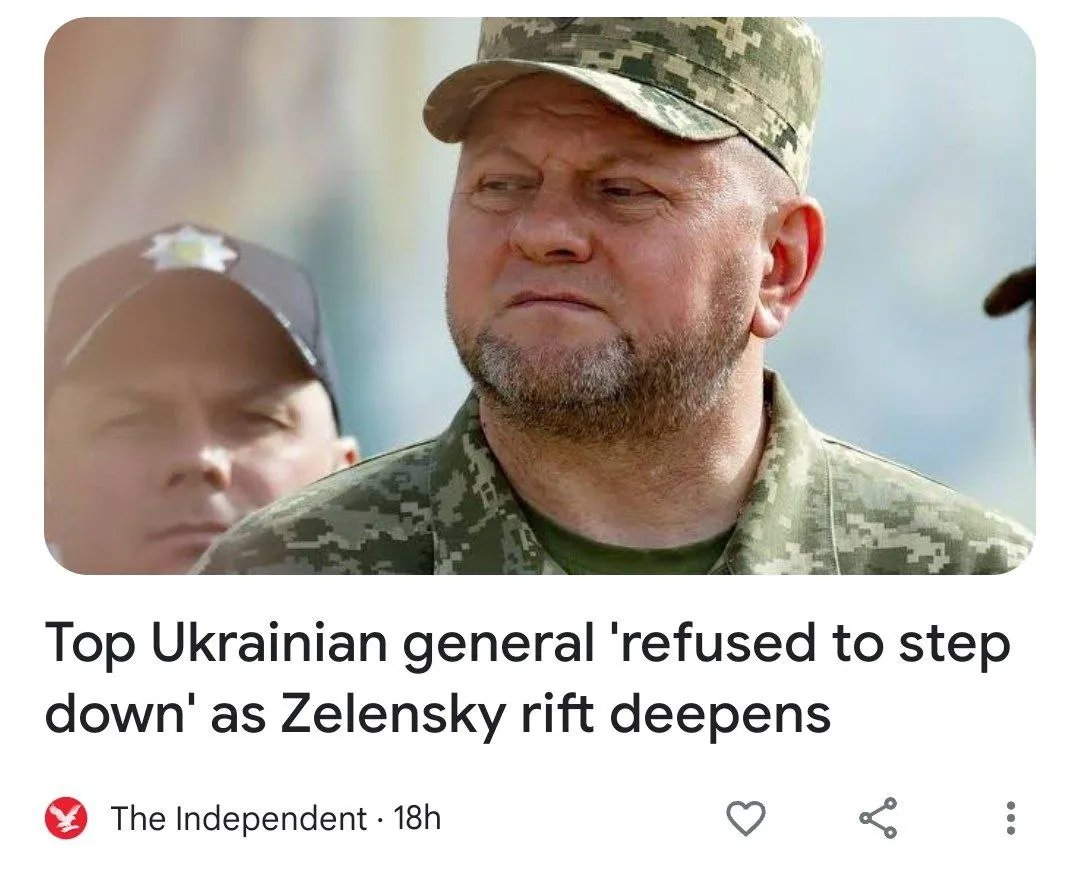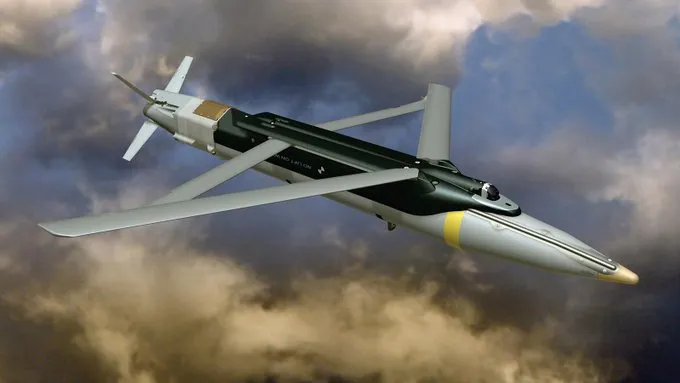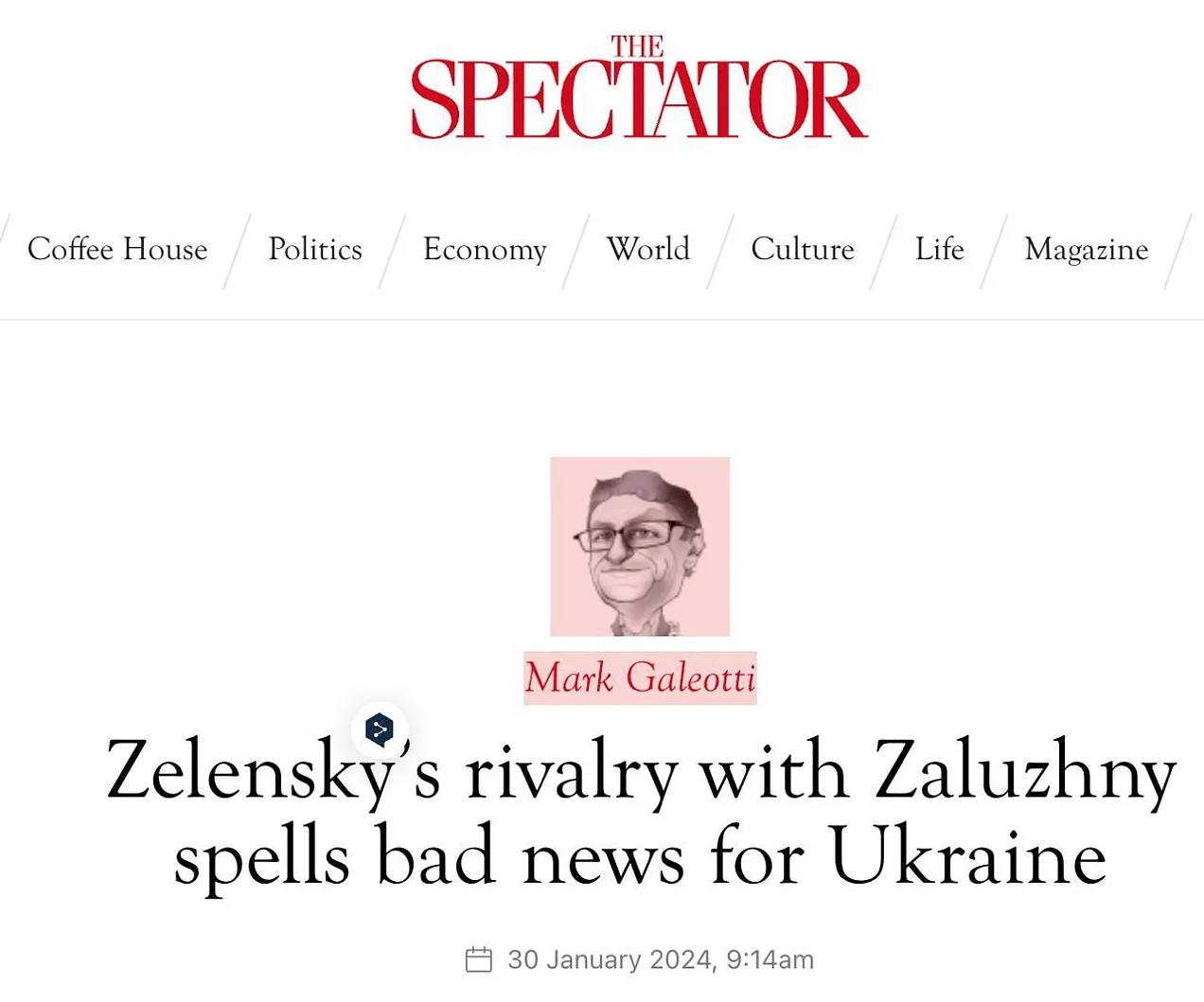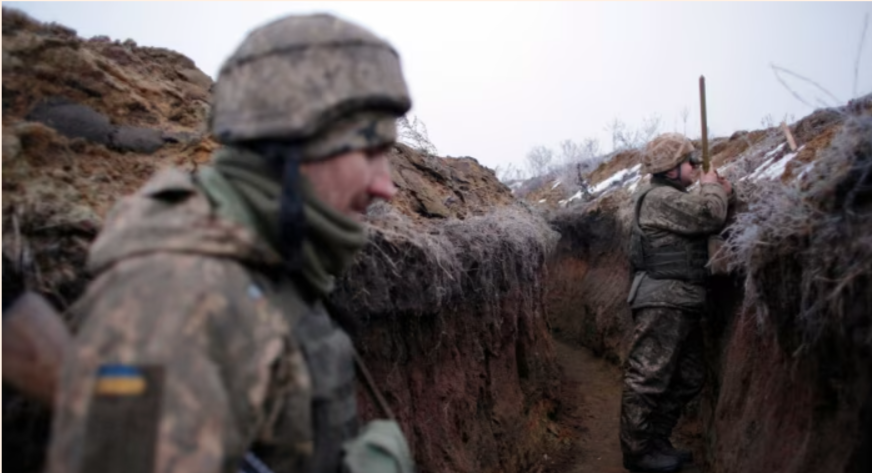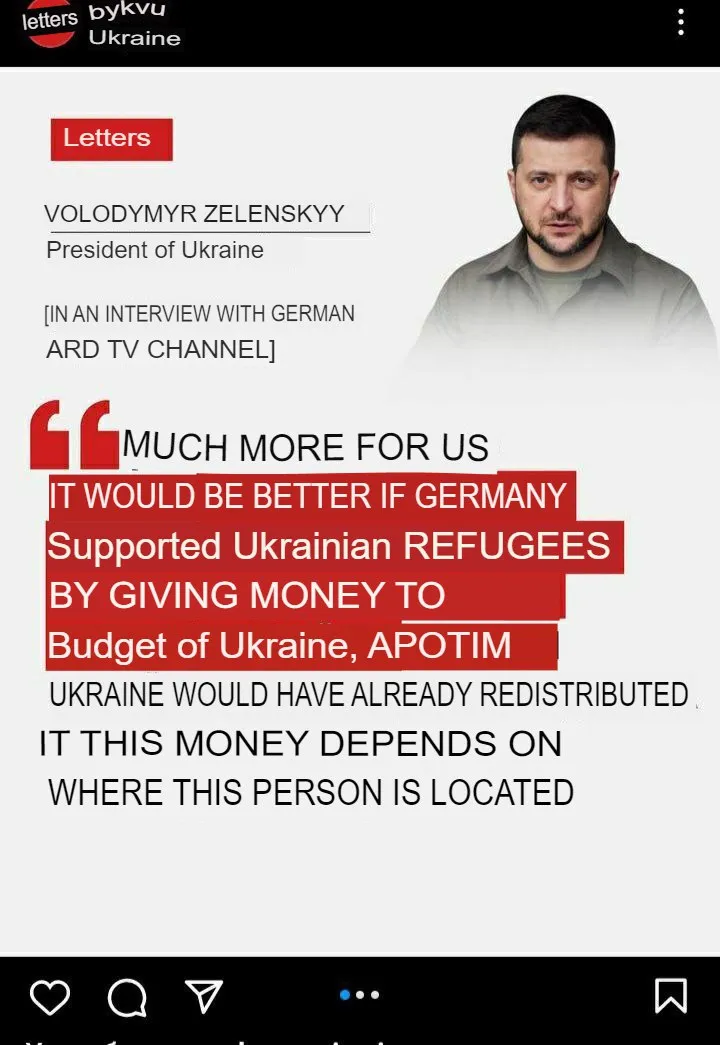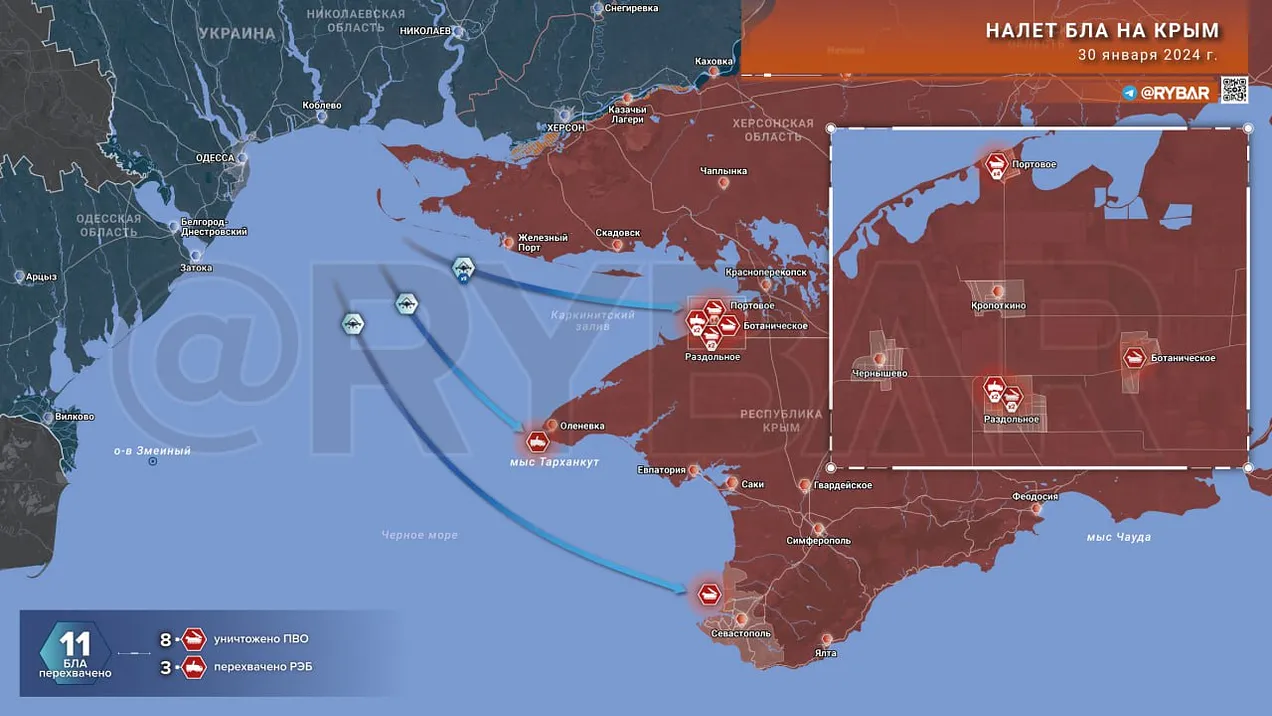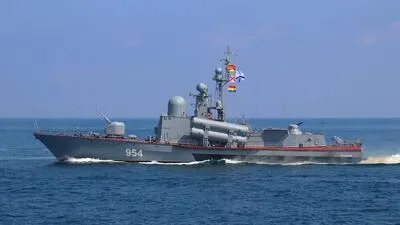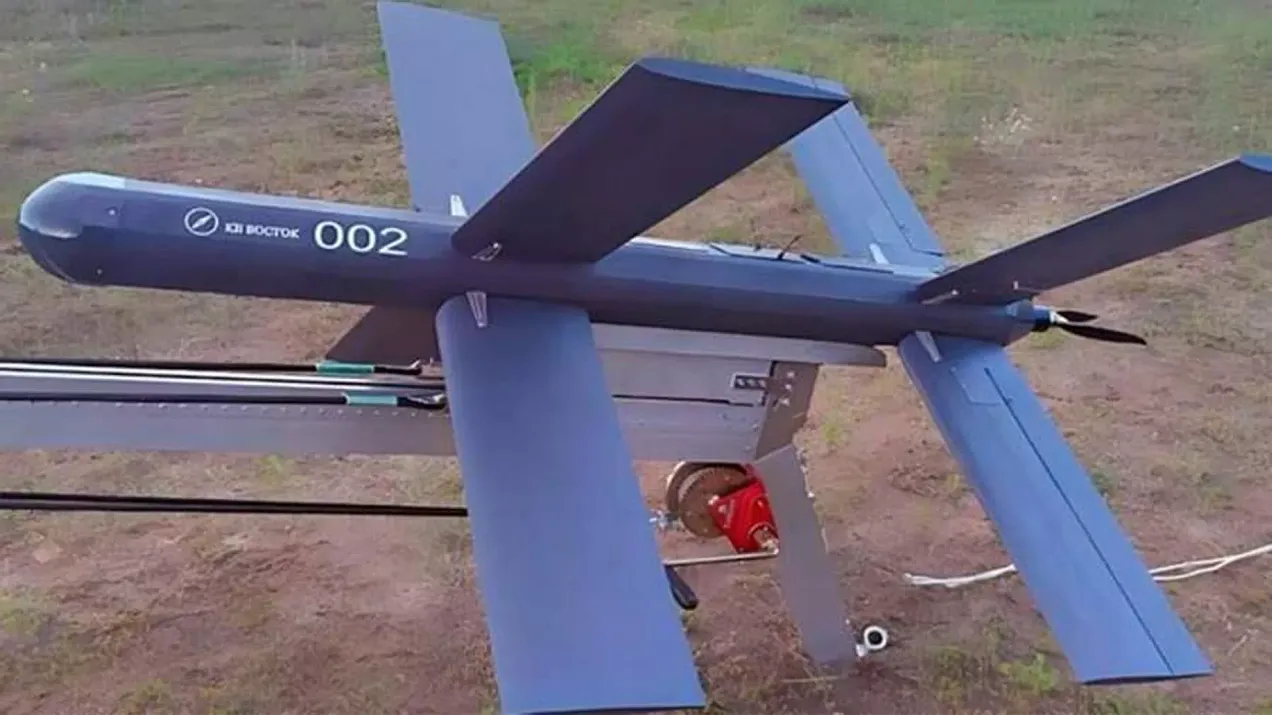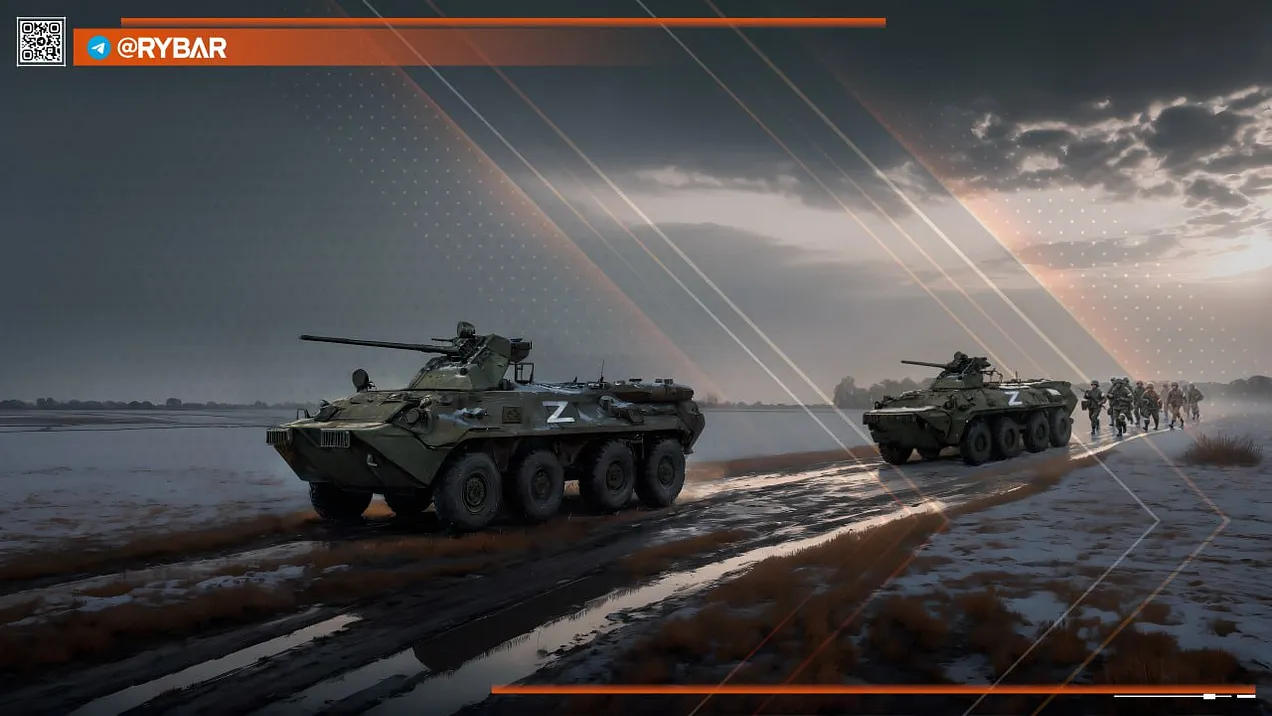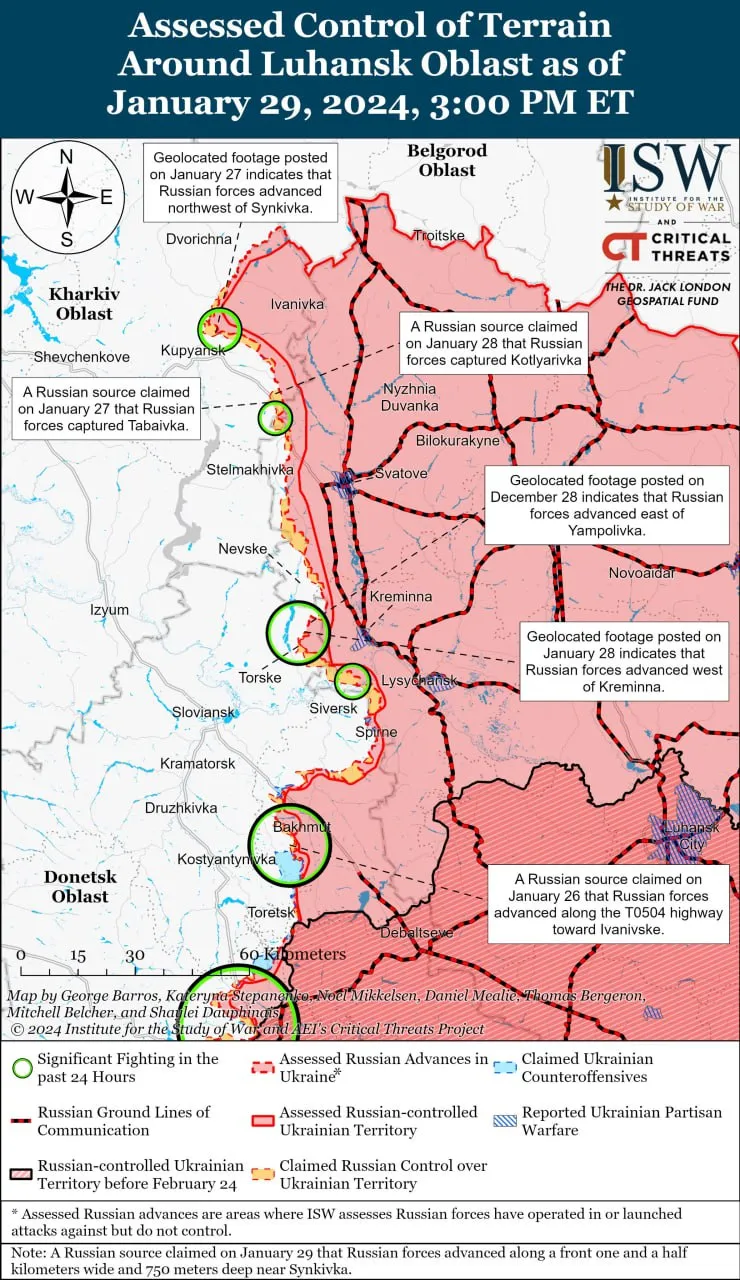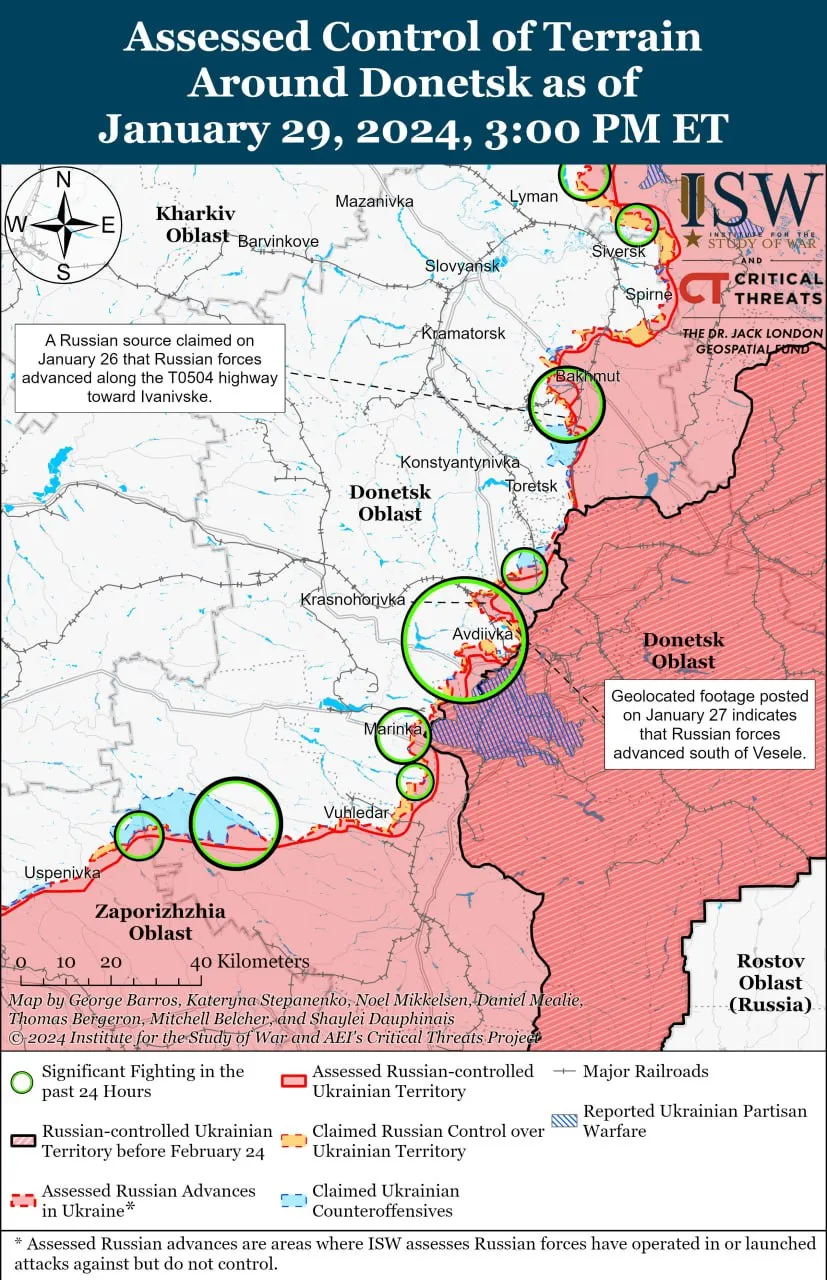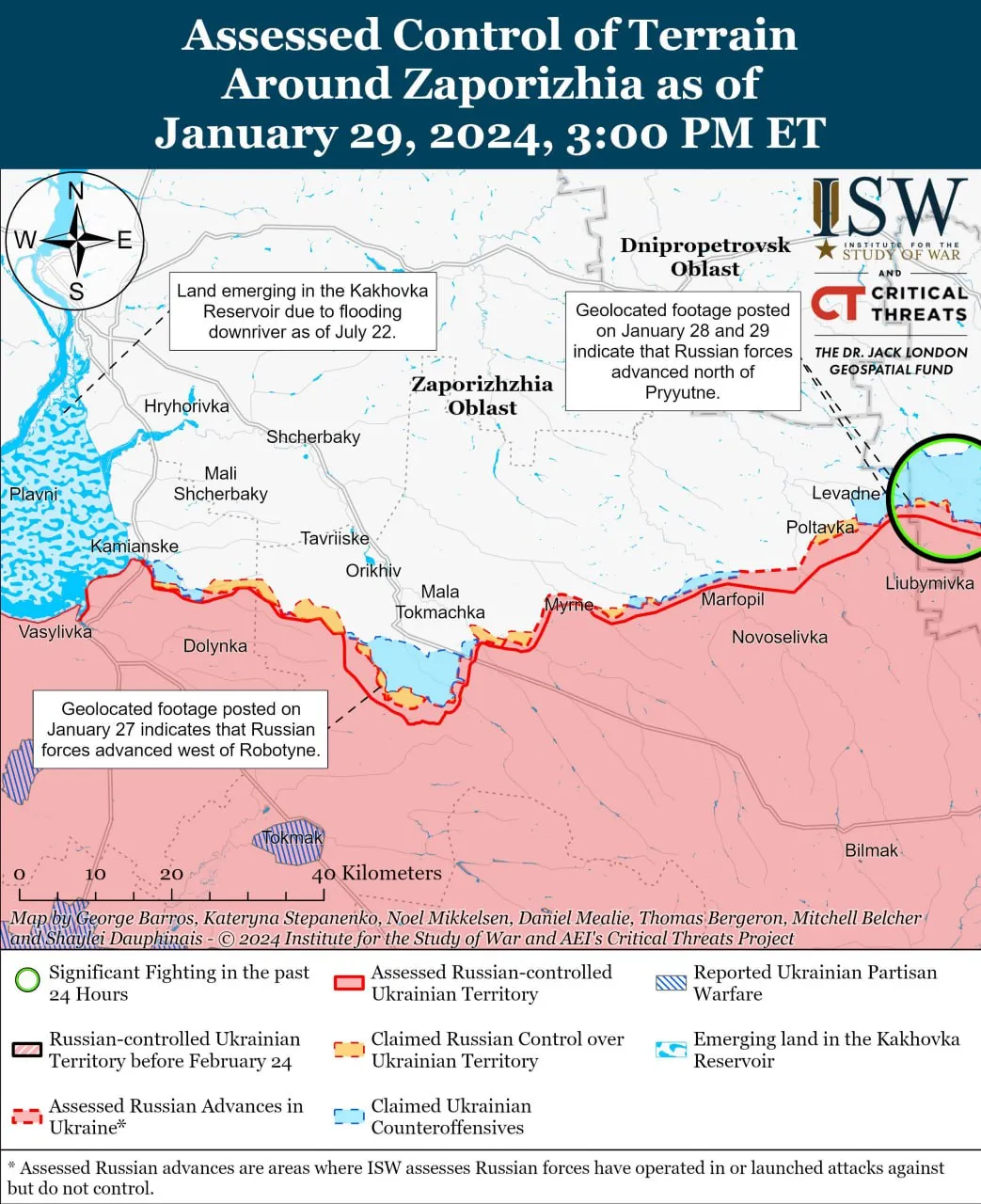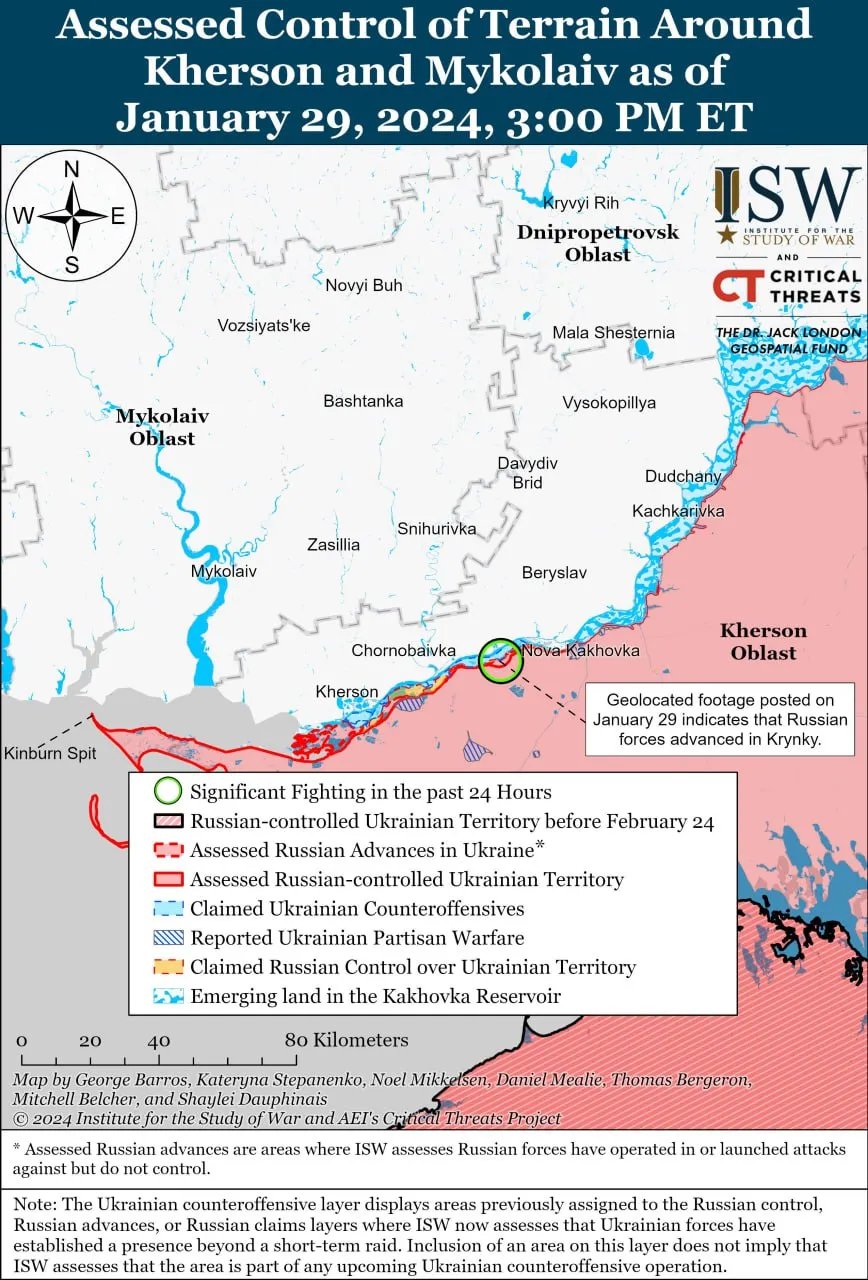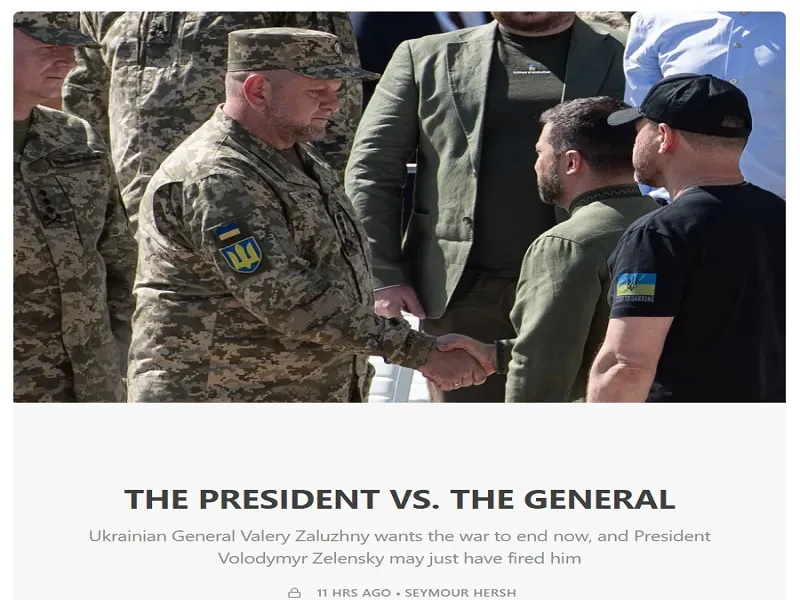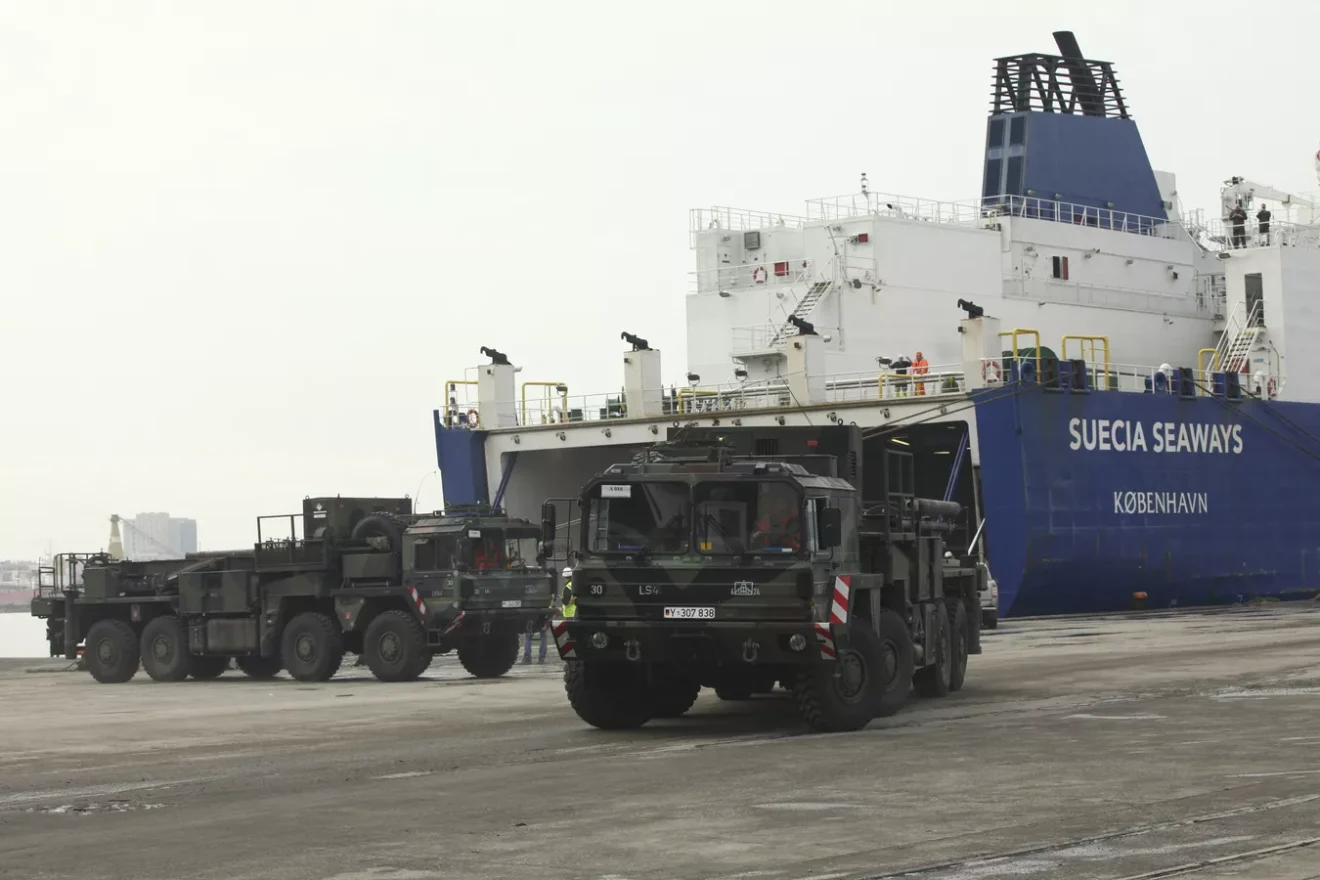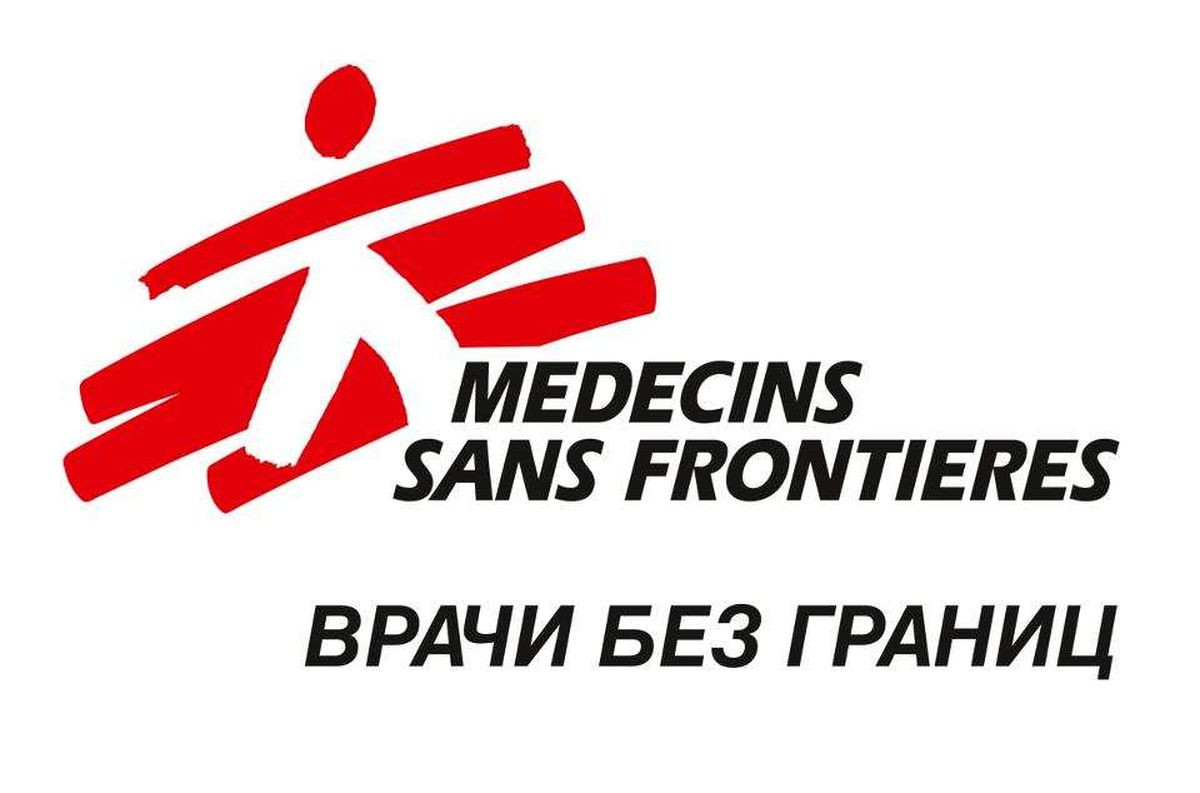POSTED BY @NSANZO ⋅ 01/25/2024
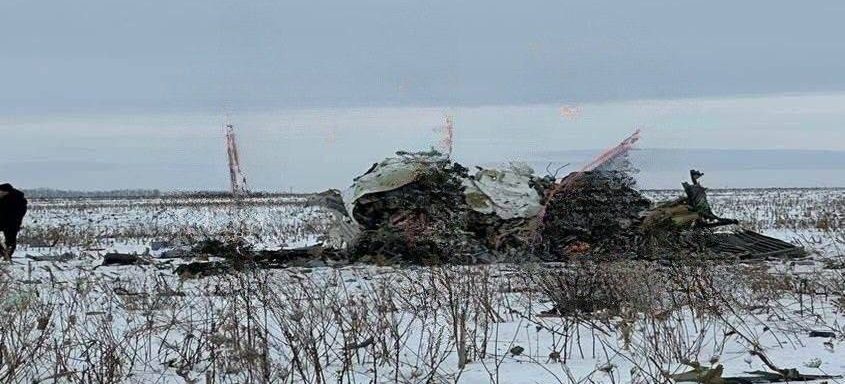
Yesterday another tragic episode occurred in Belgorod, a Russian region bordering the Kharkov oblast , resulting from the escalation of the war in the rear. In the morning, the governor of Belgorod, Vyacheslav Gladkov, announced that a plane, an Il-76 usually used to transport large loads, had gone down in the region. From there, not only speculation began about the cargo of the aircraft and the causes of the accident, but also the political and propaganda use of the events. Because beyond the facts, the informative treatment of what happened was an example of the dehumanization that war implies and the cynical use of hatred to create media victories that, at times, can become uncomfortable situations.
Much remains to be known and confirmed, but, for the moment, the most probable version of what happened is that it was a shootdown, not an accident, that caused the death of all the passengers and crew on board the Russian aircraft. The increasing use of cross-border fire and the escalation of attacks on critical infrastructure and military targets far from the front made the pro-Ukrainian press and propagandists rush to claim the facts, boast and rejoice in them. With reckless speed, media outlets such as Ukrainska Pravda , RBK Ukraina or Interfax-Ukraina rushed to provide the version given by their sources in the Ukrainian Armed Forces, which they would later qualify. Citing these obviously anonymous sources, Ukrainska Pravda , whose version was published by dozens of international media and agencies, stated that the Russian aircraft had been shot down by the Ukrainian Armed Forces. “According to our sources in the Defense Forces, the downing of a Russian Il-76 is due to the work of the Ukrainian Armed Forces,” he wrote on social networks in a tweet that could be read hours later, when the media had already changed. his version to add that, “other sources neither confirm nor deny the demolition.” However, his first assessment was clear: “The General Staff has also informed us that the plane was carrying missiles for the S-300 systems with which the Russians are bombing the Kharkiv oblast .”
The immediate need to proclaim a victory and the renunciation of the minimal journalistic work of checking sources made this version widespread on social networks, where joy and ridicule quickly appeared that later had to be deleted. “A Russian Il-76 has made an unplanned landing in the Russian terrorist federation,” wrote a propagandist with tens of thousands of followers. “All 63 people on board the I-76 that crashed near Belgorod have died,” wrote another, adding three fire emoticons. Regarding that same number of victims, the former leader of the Praviy Sektor in Odessa and emerging figure within the nationalist extreme right Serhiy Sternenko added a joke that he deleted hours later. “The filler is dead,” he wrote on his Telegram channel in his usual dehumanization of casualties who, at the time, he believed were solely Russian. The high number of casualties did not cause immediate doubts among those who wanted to celebrate the Ukrainian victory. “Sources tell Ukrainska Pravda that the Russian Iluyshkin Il-76 was shot down by Ukrainian air defenses,” wrote journalist – and Azov fan – Ilia Ponomarenko, who added that “all 63 passengers have died. The plane is said to have been carrying S-300 ammunition.” The high number of people on board did not raise any doubts for those who did not want to see that the transfer of missiles in no way requires such personnel, so rectifications occurred later.
Without giving up the idea that the aircraft could carry missiles, Ukrainska Pravda downplayed its first information that Ukraine had shot down the plane and referred only to an accident whose causes were not clarified. By then, the Ukrainian agency UNIAN had to temporarily close the comments section of its information on the events due to the excessive joy shown by Internet users. Russian authorities had already specified that among the 74 people on board the plane were 65 Ukrainian prisoners of war who were being transferred to Belgorod for exchange. Shortly afterwards, there was also talk of a second prisoner transport aircraft, which had returned to the starting point.
Surprisingly, there were no comments throughout the day from people like Mijailo Podolyak who, although generally without fully vindicating the facts, are usually quick to mock Russian misfortunes. Asked about what happened, the advisor to the President's Office refused to answer, claiming that Ukraine was trying to clarify what happened. However, the statements that were made and two official statements published yesterday point to the version maintained by the Russian Federation, which accuses Ukraine of having shot down an aircraft in which dozens of its soldiers were traveling for a prisoner exchange. After what happened, and once the Ukrainian propagandists and media began to withdraw their ridicule and the joy turned into more than reasonable doubts, Russian journalists like Alexander Kots asked Russia to publish the list of prisoners of war killed in the incident. It was not just about clearing up doubts about whether the aircraft was carrying missiles or soldiers, but about showing Ukrainian families that kyiv had killed its own troops. Although questioned from Ukrainian sectors, the BBC verified the passenger list published by Margarita Simonyan, editor-in-chief of RT , and verified that the names checked corresponded to captured soldiers.
In one of the few statements that came out in the hours after the incident, Andriy Yusov, spokesman for the GUR, the military intelligence led by Kirilo Budanov, confirmed that he had planned a prisoner exchange for yesterday on the border of the Belgorod region. Evidently, the process was suspended and it will be necessary to check in the future what impact what happened has on one of the few aspects in which some communication has been maintained between the warring parties.
In the afternoon, the media reported a statement from the Ukrainian Armed Forces that, without mentioning the Il-76, practically claimed responsibility for the demolition and announced future actions. Ukraine accused Russia of increased bombing in the Kharkiv region - forgetting, of course, the bombing of the city of Belgorod, which caused dozens of civilian victims - and declared every cargo aircraft carrying missiles in the area a legitimate target. The actions of media outlets such as Ukrainska Pravda , which removed the version of the Ukrainian shootdown from their publications, but not the accusation that Russia was transporting missiles, may indicate what Ukraine's official version will be .
To that statement we must add what was alleged in the afternoon by Kirilo Budanov's GUR. Hours earlier, Russia had insisted that Ukraine knew both the area where the exchange was going to take place and the transport route for the prisoners. The Il-76 is a means that has already been used in the recent past to transport prisoners of war to the Belgorod region, as confirmed yesterday by one of the prisoners released in early January. According to the GUR, “Ukraine was not informed about the number of vehicles, routes and methods of delivery of the prisoners.” In the style of provocation that so defines its leader, the statement continued stating that “it is known that the delivery of prisoners occurs by air, train or road. “This may indicate a deliberate act by Russia aimed at creating a threat to the lives and safety of prisoners.” And, of course, the GUR concluded by stating that everything could be “planned and deliberate actions by the Russian Federation with the aim of destabilizing the situation in Ukraine and weakening international support.” The shadow of the false flag must always be present and it is also present in this statement that sounds like a justification and excuse.
Yesterday's episode resulted in the death of 74 people, 65 of them prisoners who were going to be released and who will not reach their families, nor will the other dozens of prisoners who were to be handed over yesterday. But what happened, and especially the statement from the Ukrainian Armed Forces, is also the confirmation that kyiv, with the capacity to harm Russia in the rear, aspires to dispute the skies on both sides of the border. Because despite air superiority, Russian control of the air is far from complete.
https://slavyangrad.es/2024/01/25/29012/
Google Translator
*******
Victims of "Elenovka No. 2"
January 24, 16:55

One of the loadings of prisoners of the Armed Forces of Ukraine onto a transport board (to debunk the fake that prisoners are not carried on board)
Plus lists of killed Armed Forces officers who were transported for exchange.


Relatives may ask Zelensky’s Nazi regime why they were not exchanged, but killed. Today they should have been exchanged and ended up in Ukraine. But... (Video at link.)
The exchange was supposed to take place today in Kolotilovka.
PS. The lists of dead crew members and accompanying persons have not yet been published. Peace be upon you.
https://colonelcassad.livejournal.com/8914696.html
"Elenovka No. 2". Afterword
January 24, 21:02

1. The plane was shot down by the Ukrainian Armed Forces. The General Staff of the Ukrainian Armed Forces actually admitted this. A number of Ukrainian sources also confirmed this.
2. 74 people died on the plane - 6 crew members, 3 accompanying people and 65 Ukrainian prisoners of war.
3. Ukraine was, as usual, informed about the parameters of the exchange that was to take place in the afternoon.
4. The second plane, which was carrying another 80 people for exchange, turned around and flew to the departure airfield.
5. The shelling of the Il-76 was carried out from the territory of the Kharkov region. Traces of destructive elements have already been found on the wreckage of the car.
The type of air defense system is still unknown, an investigation team is working.
6. Il-76 pilots accomplished a feat by turning the dying car away from residential areas. Must be nominated for state awards posthumously.
7. The murder of Ukrainian prisoners of war by the Armed Forces of Ukraine repeated the situation with the murder of Ukrainian prisoners of war in the Yelenovskaya colony in 2022.
8. Ukrainian propaganda today has made a mess, confused in its testimony, tossed between joy and attempts to hide involvement in the crime committed. This was very clear today.
9. Future exchanges of prisoners of war will certainly be complicated by this war crime.
10.Ukraine must be recognized as a terrorist state. We need to start with the SBU and GUR MOU.
https://colonelcassad.livejournal.com/8915621.html
Google Translator
********
NATO BEGINS ITS LARGEST MILITARY EXERCISES SINCE THE COLD WAR
Jan 23, 2024 , 3:26 pm .

The maneuver seeks to demonstrate to Moscow that it is prepared to fight against it (Photo: File)
This Monday, January 22, they began what, in the opinion of NATO's Supreme Allied Commander in Europe, Christopher Cavoli, are the largest military exercises since the Cold War. Called “Exercise Steadfast Defender 2024,” these maneuvers are expected to extend through the month of May.
With grandiloquence some European media reported that some 90,000 soldiers from the 31 members of the Atlanticist organization and Sweden would participate in the event. Like last year 's military exercises , the test seeks to present to Moscow that it is "prepared" to fight against it.
That is why this year they once again recreate the fantasy that the Russian Federation is attacking one of its allies, so they would have to join their "forces" against that common enemy. "It will be a clear demonstration of our unity, our strength and our determination to protect ourselves," said the top commander of the Alliance, Chris Cavoli.
For his part, Admiral Rob Bauer , Dutch chairman of NATO's military committee, taking the delirium to another level, suggested last year that the organization's countries should move to a war economy and make civilian factories available for military goods, similar to what the United States did during World War II.
According to this military officer, it is not enough to plunge the continent into an energy and economic crisis by venturing to participate in a conflict that they previously assumed was won, but they will also use its population to manufacture military resources.
However, the undeniable reality is that Europe cannot even fulfill the commitment to supply ammunition to Ukraine and, finally, the United States suspended sending military resources to that conflict due to lack of budget. Given these facts, it is difficult to imagine, without bordering on underestimation, that NATO is prepared, as they claim, to participate in a real war.
https://misionverdad.com/otan-inicia-su ... uerra-fria
Google Translator
********
The UK’s New Security Pact With Ukraine
January 24, 2024
The agreement will benefit U.K. arms exporters, open Ukraine further to Western investors and increase “counter-disinformation” operations against Russia, writes Mark Curtis.
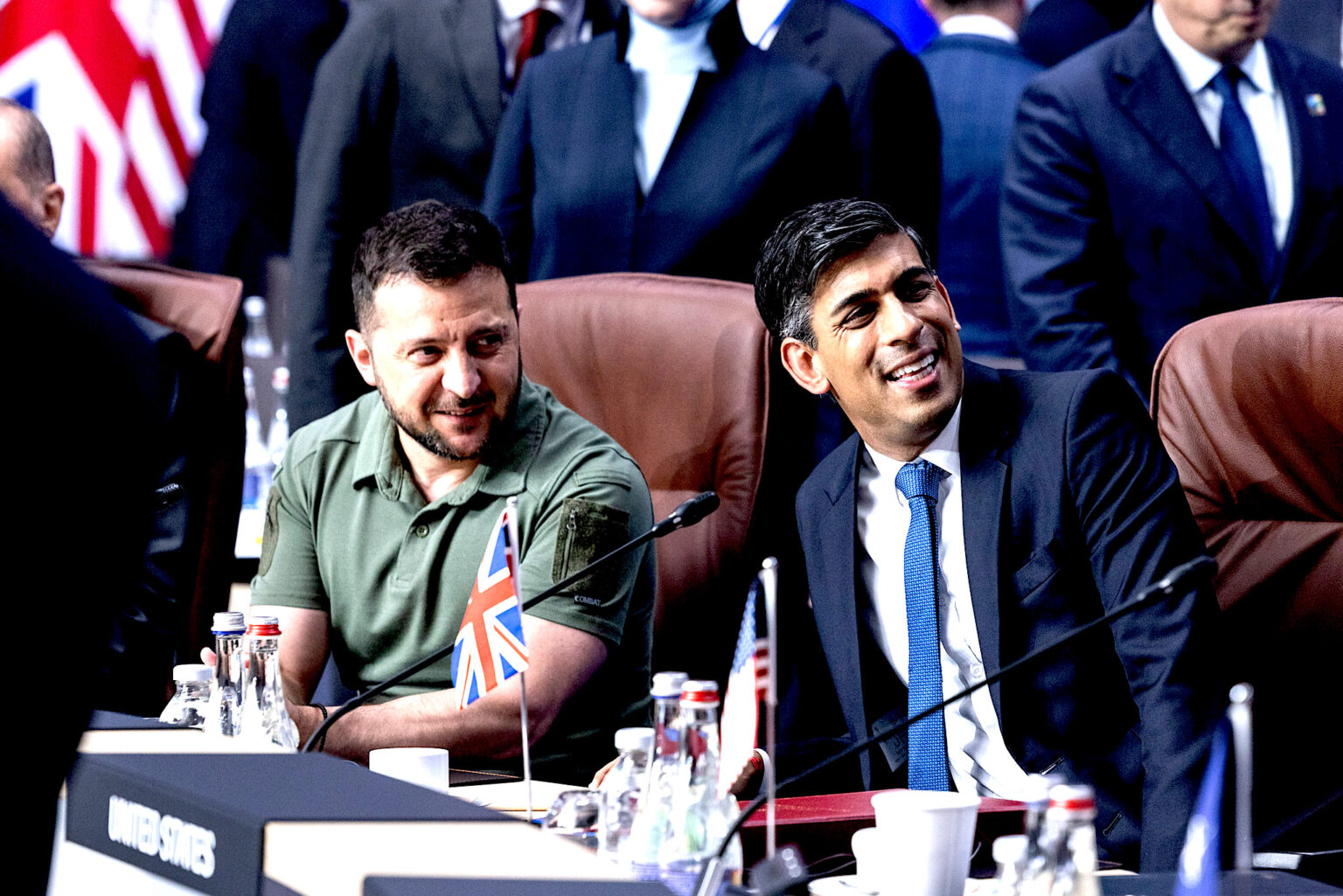
Ukraine’s President Volodymyr Zelenskyy and U.K. Prime Minister Rishi Sunak at a NATO meeting in Vilnius, Lithuania, July 12, 2023. (NATO, Flickr, CC BY-NC-ND 2.0)
By Mark Curtis
Declassified UK
U.K. will provide “equipment across land, air and sea” in any future Russian attack
British arms firms have sent £437 million worth of equipment to Ukraine since Russia’s invasion
A new agreement signed by U.K. Prime Minister Rishi Sunak and Ukrainian President Volodymr Zelensky on 12 January provides U.K. “security commitments” to Ukraine in the event of “new aggression” by Moscow.
It states:
“In the event of future Russian armed attack against Ukraine, at the request of either of the Participants, the Participants will consult within 24 hours to determine measures needed to counter or deter the aggression.”
It then says the U.K. “undertakes” to “provide Ukraine with swift and sustained security assistance, modern military equipment across all domains as necessary.”
Strikingly, the text also encourages Ukraine to “provide effective military assistance” to Britain in the event of an attack on the U.K. — similar to NATO’s mutual defence pledge — although it does not make this a formal commitment for Kyiv.
Zelensky used the words “security guarantees” or “guarantees” when describing the agreement at a press conference in Kyiv following its signing.
Sunak has tended to use the phrase “security assurances.” The text does not refer to “guarantees” but to “security commitments.”
Assurances
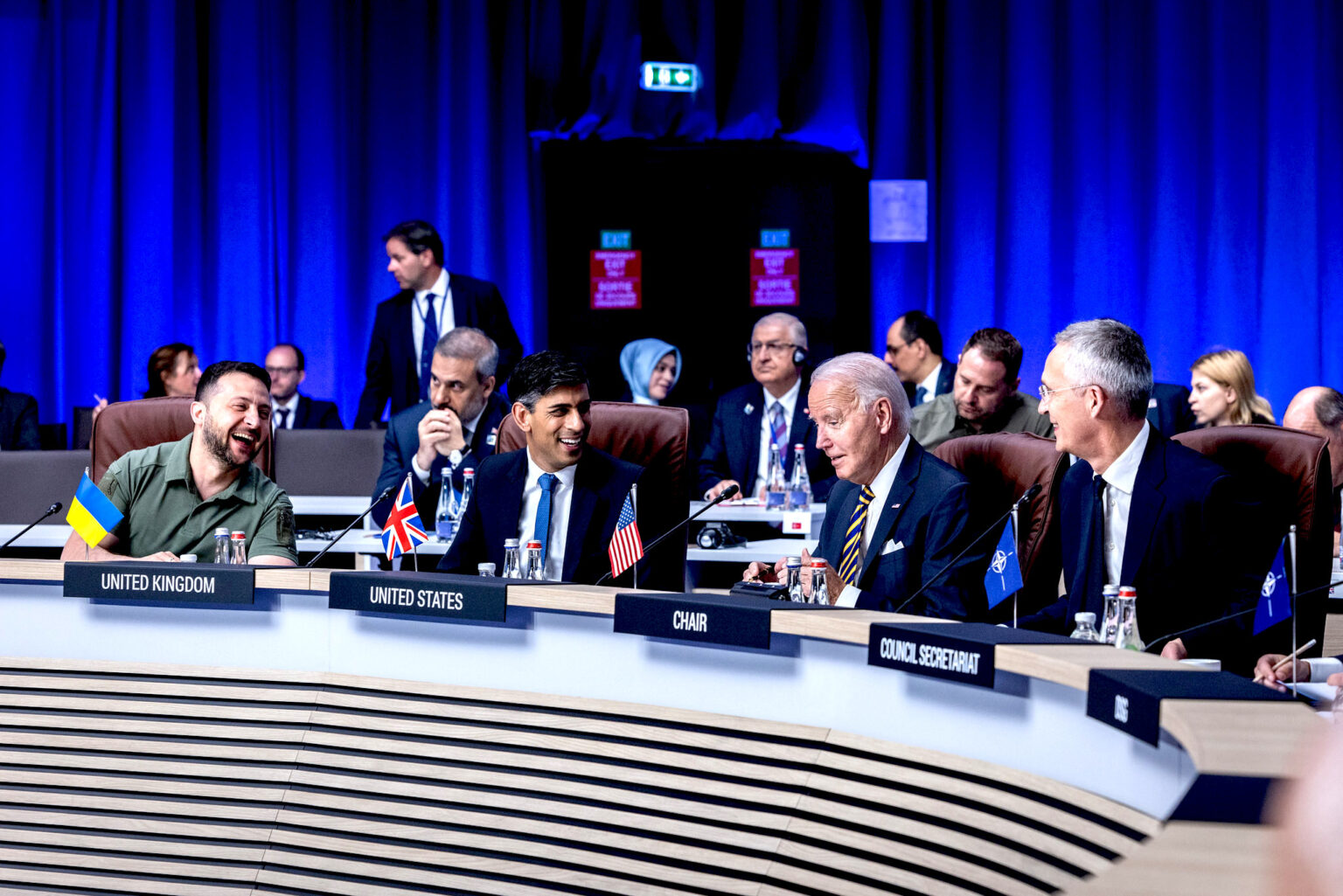
From left, Zelenskyy, Sunak, U.S. President Joe Biden and NATO Secretary General Jens Stoltenberg in Vilnius, July 12, 2023. (NATO, Flickr, CC BY-NC-ND 2.0)
Some commentators say such “commitments” are toothless and do not provide a hard defence guarantee. They compare them to the 1994 Budapest Memorandum when Ukraine agreed to give up its Soviet nuclear arsenal in exchange for “security assurances” which never materialised.
Neither has the agreement yet been ratified by either country’s parliament, meaning its legal position is uncertain.
Perhaps most importantly, the accord does not explicitly commit Britain to despatching military forces to Ukraine by providing boots on the ground. However, a risk is that it could embroil the U.K. in any future war with Russia.
Describing the agreement in Parliament, Sunak stated that “if Russia ever invades Ukraine again, we will provide swift and sustained assistance, including modern equipment across land, air and sea. Together with our allies, the U.K. will be there from the first moment until the last.”
The accord is a further step towards NATO membership for Ukraine. It increases U.K. military cooperation with Kyiv intending “to deepen Ukraine’s interoperability with NATO,” “accelerate Ukraine’s transition to NATO equipment and standards” and develop “a pathway to a future in NATO.”
The accord has arisen from NATO’s summit in Lithuania last July in which G7 states pledged to make a series of bilateral security agreements with Ukraine.
More Arms
But the agreement goes beyond security commitments, and Britain’s arms exporters will likely be major beneficiaries.
In a section on “defence industry cooperation,” the text says the U.K. will work with arms companies and Ukraine to “identify opportunities for closer defence industrial partnerships and collaboration including for mutual commercial benefit.”
Britain “will encourage its defence industry to work with Ukraine” on “manufacturing of U.K. defence products” in the country.
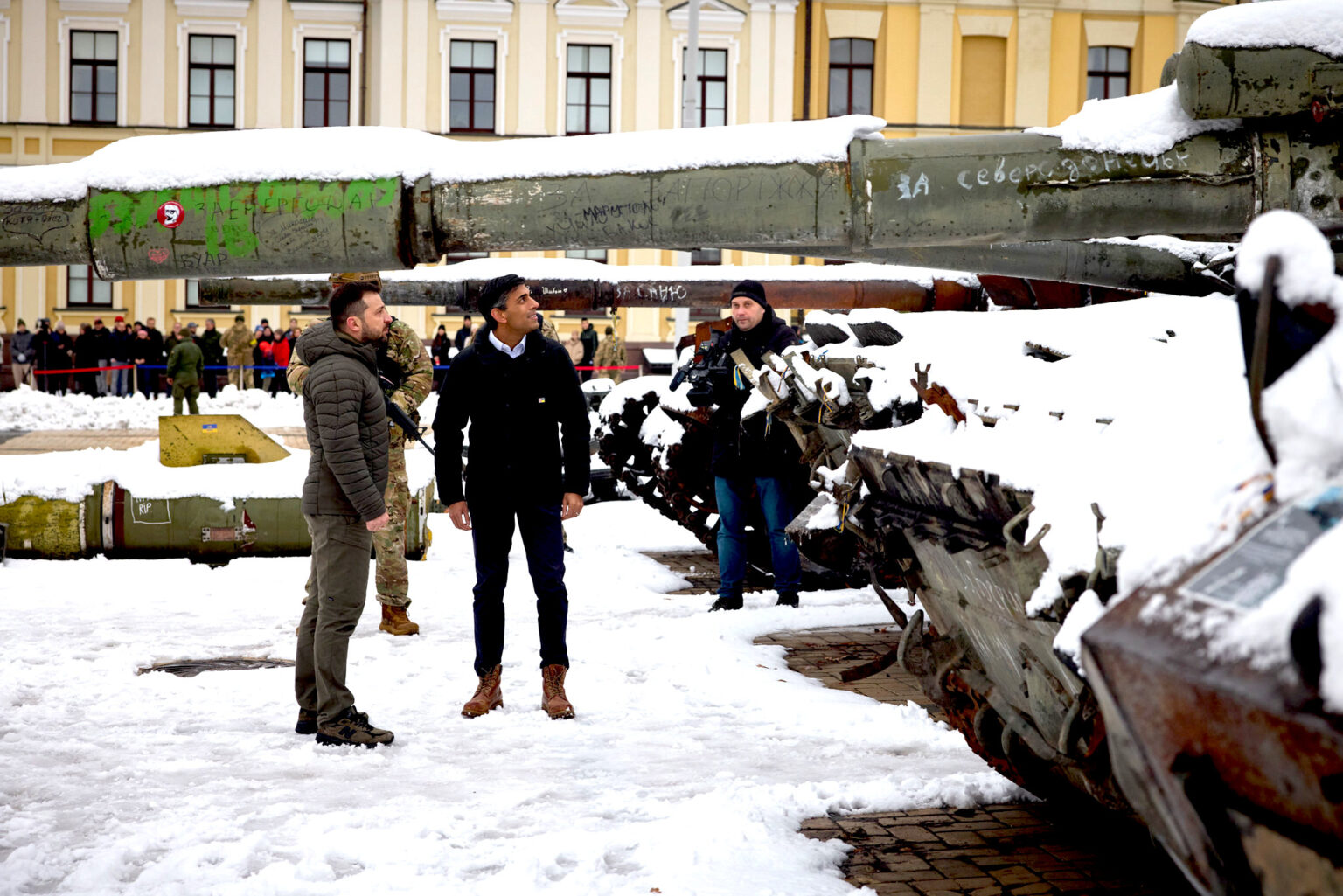
Zelenskyy and Sunak in Kiev, November 2023. (President of Ukraine, Flickr, Public domain)
The Ukraine war has been a boon for U.K. arms firms. Since Russia’s invasion in February 2022, they have exported £437 million worth of military equipment to Ukraine – over 12 times more than they sold in the previous 10 years.
Both Babcock and BAE, the U.K.’s largest arms exporter, have recently set up offices in Ukraine, positioning themselves to secure new deals.
BAE’s agreement with Ukraine will “ramp up the company’s support to Ukraine’s armed forces” and enable BAE “to work alongside” them “to… support its future force structure.”
Disinformation
A section in the text on “information security” notes that Britain will also help Ukraine counter Russian propaganda “globally” — or “support each other’s efforts to tell the truth well,” as the document quaintly puts it.
The two countries will work together “offering the world a truthful alternative to the Russian Federation’s disinformation campaigns” which will involve “closer collaboration of communications output.”
Britain’s Foreign Office is already spending millions on private “counter-disinformation” groups which tend to support U.K. government policy positions, such as over Ukraine.
Declassified found before Russia’s invasion of Ukraine that the British government ploughed at least £82.7 million of public money into media projects in countries bordering or near Russia in the four years to 2021.
The U.K. government’s funding of the “counter-disinformation” industry looks more like an information operation in itself rather than a neutral effort to combat fake news.
Private Sector

Sunak, center, with, from Ukraine’s Prime Minister Denys Shmyhal, EU Commission President Ursula von der Leyen, Latvia’s then Prime Minister Krisjanis Kari?s and Estonia’s President Alar Karis at the Ukraine Recovery Conference in London in June 2023. (Simon Dawson / No 10 Downing Street)
A further commitment is ensuring Ukraine promotes pro-Western economic policies through reforms and postwar reconstruction.
“Before this terrible war, Ukraine’s economy was becoming a huge investment opportunity,” then Foreign Minister Leo Docherty said at the Ukraine Recovery Conference hosted in London last June.
That conference urged “international businesses” to invest in Ukraine in its “ambitious reform agenda,” including “reducing the size of the government,” “privatization,” “deregulation” and “investment freedom.”
The new agreement reinforces these goals. Ukraine will have “a strong private sector-led economy… that is integrated into global markets,” the text states. This involves Kyiv fully implementing IMF reforms, promoting measures “to increase investor confidence” and “unlock private investment.”
In this, the U.K. will “support” activities in economic sectors such as energy, infrastructure and tech.
https://consortiumnews.com/2024/01/24/t ... h-ukraine/
*******
From Cassad's Telegram account:
Colonelcassad
Summary of the Ministry of Defense of the Russian Federation on the progress of the special military operation (as of January 24, 2024) Main :
- The Ministry of Defense of the Russian Federation for the first time reported the destruction of the French-made SAMP-T anti-aircraft missile system;
- The Russian Armed Forces repelled two attacks by assault groups of the Ukrainian Armed Forces in the Donetsk direction near the village of Shumy;
- Russian air defense during the day shot down 8 HIMARS MLRS shells and 2 Tochka-U tactical missiles, destroyed 51 Ukrainian drones;
- The Russian Armed Forces in the Kupyansk direction repulsed 5 attacks by the Armed Forces of Ukraine during the day, the enemy lost up to 175 military personnel;
- The total losses of the Ukrainian Armed Forces per day in the Donetsk direction amounted to up to 220 military personnel, 3 tanks, 8 armored combat vehicles;
- The Ukrainian Armed Forces lost up to 105 military personnel in a day in the South Donetsk direction;
- The Russian Armed Forces repelled two attacks by the Ukrainian Armed Forces in the Yampolovka area in the Krasnolimansk direction, the enemy lost up to 260 servicemen;
- The Russian military has improved the situation along the front line in the Donetsk direction;
- The Armed Forces of Ukraine in the Kherson direction lost up to 60 military personnel per day.
The enemy lost up to 50 troops, two armored fighting vehicles, three vehicles and a D-20 gun .
In addition, 51 Ukrainian unmanned aerial vehicles were destroyed in the areas of the settlements of Olshana, Tavolzhanka, Tokarevka of the Kharkov region, Spornoe, Shevchenko, Marinka of the Donetsk People's Republic, Belogorivka Zhitlovka, Ploshchanka of the Lugansk People's Republic, Radensk, Sagi, Babino of the Kherson region, Svetloe, Verbovoe and Smeloe, Zaporozhye region.
t.me/mod_russia
/34970
***
Colonelcassad
The current week has been marked by successful strikes using the Russian Aerospace Forces and long-range precision weapons against enemy rear command posts and bases of units from the command of the Special Forces of the Armed Forces of the Armed Forces in the Kharkov region (the airborne assault forces of the KRAKEN battalion were hit in Balakleya ).
@Multi_XAM
Telegram
MultiXAM
https://t.me/s/boris_rozhin
Google Translator
******
The IL-76 Shootdown By A US Patriot Missile Could Lead To Zaluzhny's Replacement With Budanov
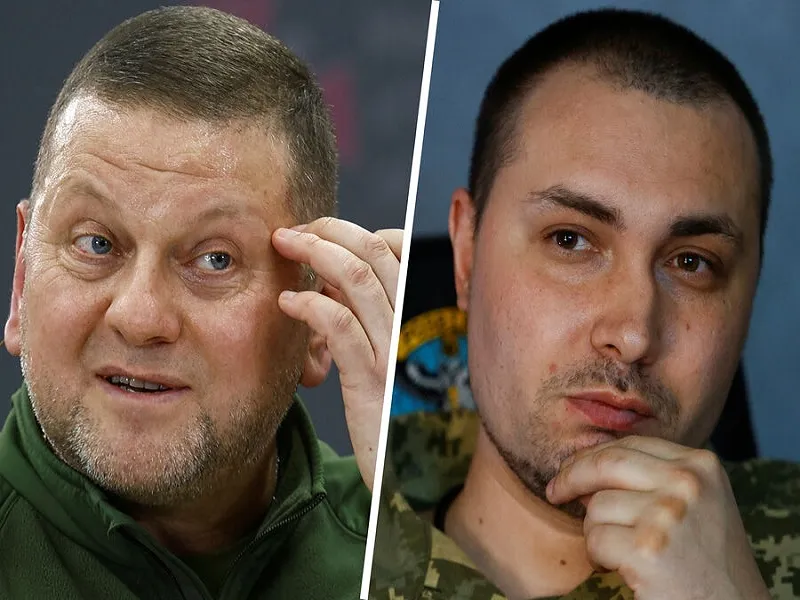
ANDREW KORYBKO
JAN 24, 2024
All things considered, blaming Zaluzhny – perhaps by claiming that he should have verified alleged intelligence about the IL-76’s cargo before shooting it down in order to make this seem like an unfortunate accident – is the most politically convenient option at Zelensky and his US patron’s disposal. It could shift the blame from them to him and facilitate Zaluzhny’s replacement with the much more politically reliable Budanov without much resistance from the armed forces or civil society.
Kiev shot down a Russian Il-76 military transport plane carrying 65 Ukrainian POWs as it was flying over the border region of Belgorod on Wednesday. Patriot missiles were reportedly used during the attack, which was carried out with the aid of American instructors. The regime was informed of the flight ahead of time and was aware that it was carrying its captive troops. The planned swap has now been called off and questions are swirling about why Kiev would kill its own POWs.
CNN ridiculously suggested that it might have been a case of friendly fire by drawing attention to a prior air alert and drone interception an hour before the incident, while some Ukrainian sources circulated the conspiracy theory that the plane was allegedly carrying only S-300 air defense missiles onboard. The first narrative is meant to smear the reputation of the Russian Armed Forces while the second is a “face-saving” deflection from Kiev’s culpability for what happened.
A more realistic interpretation is that American proxy war tactics are shifting as the conflict began to wind down late last year after Kiev was pushed back on the defensive following its failed counteroffensive. That theory also has its faults, however, since five Russian military aircraft were reportedly shot down by Patriot missiles over the border region of Bryansk last May so there isn’t anything new this time except that 65 Ukrainian POWs were killed after Kiev knew they were on board.
The specifics of this incident therefore lead to suspicion that these captive troops were deliberately targeted by those American-advised Ukrainian air defense controllers who were operating the Patriot air defense systems on Wednesday for the reasons that will now be explained. The backdrop to what happened was that Russia’s foreign spy agency predicted an impending bureaucratic reshuffle on Monday a day before a former Pentagon official reported on rumors that Zelensky might oust Zaluzhny.
Stephen Bryen, who served as staff director of the Near East Subcommittee of the US Senate Foreign Relations Committee and as deputy undersecretary of defense for policy and is currently a senior fellow at the Center for Security Policy and Yorktown Institute, published the article on his Substack. According to him, the Ukrainian leader wants to replace the Commander-in-Chief with military intelligence head Budanov, and he’s planning to do so by blaming Zaluzhny for recent battlefield losses near Avdeevka.
Zelensky’s top rival commands immense respect among the armed forces and civil society, the first of which are growing so angry with their leadership’s military plans that there was even a whiff of mutiny in the New York Times’ report last month about the Kyrnki debacle. Aware of how much Ukraine’s already fragile military-political dynamics had been destabilized by the failed counteroffensive, an expert from the influential Atlantic Council called on Zelensky to form a “government of national unity” a month ago.
Adrian Karatnycky’s demand was made through his article for Politico and sold as the best way to preemptively avert potentially forthcoming protests with the innuendo being that it could also neutralize any possibly impending plans for a military coup that could occur independently of those protests. The dilemma that Zelensky found himself in is that complying with Karatnycky’s proposal could signal weakness and lead to the end of his political career while removing Zaluzhny could lead to a mutiny.
Delaying any action also has its detriments too since grassroots and military pressure could reach uncontrollable proportions in the coming future, further worsening the strategic situation that he found himself in. Russia’s foreign spy agency didn’t mention any military reshuffle plans in their statement earlier this week, however, which might be because they were unaware of them or wagered that it’s better not to comment since doing so could influence the process in ways adverse to their interests.
In any case, the sequence of events from mid-December up until Wednesday’s IL-76 incident – especially the aforementioned statement that preceded Bryen’s report about Zelensky’s plans to replace Zaluzhny with the much more politically reliable Budanov by a single day – suggested deepening intrigue in Kiev. After what just happened following Kiev’s downing of a plane full of Ukrainian POWs by American-advised air defense operators, the public pretext has now been created for replacing him if he wants to.
That’s not to say that Zelensky will certainly do so since any such a move is fraught with the very real risk of blowback due to how popular Zaluzhny is among the armed forces and civil society, but both categories of his supporters might only put up mild resistance if he’s blamed for this incident. It’s not implausible that Zelensky will either directly blame him or do so via media surrogates since he himself wants to eschew responsibility and he definitely doesn’t want anyone pointing fingers at America.
All things considered, blaming Zaluzhny – perhaps by claiming that he should have verified alleged intelligence about the IL-76’s cargo before shooting it down in order to make this seem like an unfortunate accident – is the most politically convenient option at Zelensky and his US patron’s disposal. It could shift the blame from them to him and facilitate Zaluzhny’s replacement with Budanov without much resistance from the armed forces or civil society.
As for why the US might want him to go, it could be that he’s deemed more amendable to the peace talks that America’s leading liberal-globalist policymaking faction is still reluctant to relaunch, in which case they could fear that a possible coup would stop their proxy war plans and doom Biden’s re-election. They might of course also calculate that the risk of a coup, which could possibly be preceded by large-scale protests across the country in his support, would spike with his removal and thus call it off.
Whatever ultimately ends up happening, it’s important for observers not to extend credence to CNN and Ukraine’s conspiracy theories about Russia accidentally shooting down its own plane and it supposedly only carrying S-300s respectively, since Kiev definitely knew that there were POWs on board. It therefore remains to be seen why its American-advised air defense operators still shot it down, but more clarity is expected as time passes and the military and/or political consequences of this incident become known.
https://korybko.substack.com/p/the-il-7 ... us-patriot
******
French Mercenaries Dying in Ukraine: The West Encourages the Enlistment of Militants to Fight on Kiev’s Side
Lucas Leiroz
January 24, 2024
Paris is believed to be secretly encouraging large numbers of mercenaries to join Kiev’s forces, especially after political events in the African Sahel
You can follow Lucas on X (former Twitter) and Telegram.
Recently, Russian forces bombed military facilities in Kharkov, killing more than sixty foreign mercenaries, most of them French. The case gained great attention in the media for showing the high participation of foreign troops in hostilities against Russia, which makes it clear that NATO countries are participating in the conflict in an intense way, not only with the mere sending of money and weapons.
The incident in Kharkov resumed discussions on the topic of the presence of foreign mercenaries on Ukrainian soil. Since the beginning of the special military operation, non-Ukrainian citizens have often died on the battlefield when fighting on Kiev’s side. Russia has already made it clear that eliminating enemy mercenary troops is one of its top priorities, which is why attacks like this recent one will continue to happen until foreigners stop arriving in Ukraine.
There are several reasons why mercenary soldiers enlist to fight in Ukraine. There are those militants who are ideologically committed to the ultranationalist ideology of the Kiev regime, who join the Ukrainian forces in “solidarity” with the neo-Nazi dictatorship. There are those ordinary citizens, mainly from emerging countries, who are attracted by the opportunity of a job in the military field, being induced to enlist. And there are also professionals from the private military sector who are hired by the Ukrainian state or Western countries to conduct operations in Ukraine.
All these foreign troops play a vital role in the Western-Ukrainian war efforts. Foreigners help compensate Kiev for its losses, as they replace native fighters who perish in combat. At the same time, these soldiers, especially those from NATO countries, help the Western bloc acquire real direct combat experience with Russian forces – preparing the alliance for a possible future scenario of total war.
Currently, the Atlantic military alliance cannot send official troops to Ukraine, as this would represent the start of a direct war with Moscow. The real meaning of the conflict in Ukraine is precisely the use of Kiev as a proxy to wage war against Russia, however this could change in the future. As Ukraine rapidly loses and anti-Russian paranoia in the West continues to grow, it is possible that the situation will become out of control at some point. In this sense, one way for Western countries to prepare is by sending unofficial troops to the Ukrainian battlefield, where frictions with the Russians are already occurring. These soldiers tend to pass on field experience and data to officers in their countries, which is why they must be considered especially dangerous, with their elimination being a priority for Moscow.
However, one detail that draws attention in the recent case of Kharkov is the strong presence of French citizens among the mercenaries. In fact, there are undoubtedly many French nationals fighting for the Ukrainian regime. Last year, Paris’ intelligence admitted that at least 400 French fighters were on the Ukrainian front – around thirty of them being known neo-Nazi criminals. Considering that these are public data exposed by the French government itself, it is possible to say that the real number may be much higher.
Paris is believed to be secretly encouraging large numbers of mercenaries to join Kiev’s forces, especially after political events in the African Sahel. With the recent wave of pro-Russian revolutions in African countries, the French sphere of influence on that continent has been severely diminished. Paris appears to be trying to “compensate” for its frustration in Africa with massive support for Kiev, sending large numbers of mercenaries to defend the regime.
This is also the opinion of Stevan Gajic, an analyst at the Institute of European Studies in Belgrade, who recently said in an interview that Macron is “hysterical” about Russia. Gajic believes that the French president’s recent speeches in Paris and Davos, calling for a “victory” against Russia, show how fanaticized he is in his anti-Russian hatred. Gajic stated that Paris is “especially frustrated” after the wave of revolutions in Africa and that he thinks “that’s another motive for such feverish support of the Ukrainian cause, and NATO’s cause against Russia”.
However, any kind of support for the Ukrainian regime is becoming embarrassing for the West itself. Just as NATO’s weapons are destroyed every day on the battlefield, foreign mercenaries are frequently targeted and neutralized. Instead of “wearing down” Russia or training its citizens for direct war in the future, the West is only losing influence and being demoralized. Furthermore, with massive deaths on the front lines, the tendency is for fewer and fewer mercenaries to accept fighting for Kiev.
It is also important to remember that these non-Ukrainian citizens are not protected by international humanitarian law and that Moscow has already made it clear that, if captured, they will be judged as neo-Nazi mercenaries – in the same way that has happened with militants from fascist organizations such as the Azov Battalion. So, considering the high risks of death in combat and lack of legal protection, fighting in Ukraine definitely doesn’t seem “profitable” for professional mercenaries, which is why a drop in the number of foreign troops is expected in the near future.
Kiev, in turn, will continue to massively encourage the arrival of these mercenaries. Zelensky recently proposed a law giving citizenship to all foreigners who fight in the war, as a way of fostering interest in enlisting abroad. But, given the destruction of the country and the lack of good prospects for the future, it is unlikely that Kiev will achieve great results with such measures.
https://strategic-culture.su/news/2024/ ... kiev-side/
*******
POLAND COVERED UP FOR NORD STREAM ATTACKERS – WSJ
JANUARY 24, 2024 NATYLIESB
RT, 1/8/24
Polish officials withheld evidence and attempted to stall an international probe into the bombing of the Nord Stream gas pipelines, making investigators “suspicious of Warsaw’s role and motives,” the Wall Street Journal reported on Monday.
The Nord Stream 1 and Nord Stream 2 gas lines – which linked Russia with Germany under the Baltic Sea – were destroyed in a series of explosions near the Danish island of Bornholm in September 2022. A joint inquiry by Germany, Denmark, and Sweden is ongoing, with investigators theorizing that a Ukrainian team rented a yacht in Germany from a Polish company, which they used to transport explosives to the blast sites.
When the investigators chased these leads in Poland, they found themselves stonewalled by government officials and law enforcement agents, the Journal reported, citing sources within the investigation.
Polish authorities failed to turn over testimony from eyewitnesses who encountered the yacht’s six-person crew in the Polish port of Kolobrzeg until pushed to do so by German police, the sources said. CCTV footage from the port was then withheld, and Poland’s internal security agency, the ABW, “failed to answer queries, obfuscated or gave contradictory information,” the newspaper stated.
Polish prosecutors said they found no traces of explosives on the yacht, despite never having boarded it to check, the investigators claimed. The investigation would later find explosive residue on the vessel, according to media reports.
The prosecutors reportedly told European investigators that the boat arrived in Kolobrzeg at 4pm September 19, when it actually moored seven hours earlier. Later in the investigation, the ABW told its sister agencies in Europe that the yacht “had links with Russian espionage,” the newspaper wrote, adding that investigators considered this “disinformation.”
According to all available information, no Western governments or intelligence agencies suspect that Russia was behind the bombings. Gas sold to Europe via the Nord Stream lines was a lucrative source of revenue for Moscow, and was seen as a powerful instrument of leverage for the Kremlin.
Poland’s efforts to hinder the investigators have made them “increasingly suspicious of Warsaw’s role and motives,” the Wall Street Journal noted. All of the alleged misdirection and obfuscation took place under Poland’s previous government, however, and unnamed “senior European officials” told the newspaper that they are considering contacting Poland’s new prime minister, Donald Tusk, in the hope that he will grant them access to police and security personnel who may have previously been pressured to stay silent.
According to an alternate theory put forward by American journalist Seymour Hersh, the CIA was responsible for the Nord Stream blasts. Citing sources within the intelligence community, Hersh argued that CIA divers working with the Norwegian Navy planted remotely-triggered bombs on the lines last summer, using a NATO exercise in the region as cover.
Bolstering this theory was a tweet by former Polish Foreign Minister Radoslaw Sikorski, who within hours of the explosions shared an image of a giant gas leak at the blast site along with the caption “Thank you, USA.”
Russian President Vladimir Putin has backed this explanation, stating last month that the sabotage operation “was done, most likely, by the Americans or someone at their instruction.”
https://natyliesbaldwin.com/2024/01/pol ... ckers-wsj/

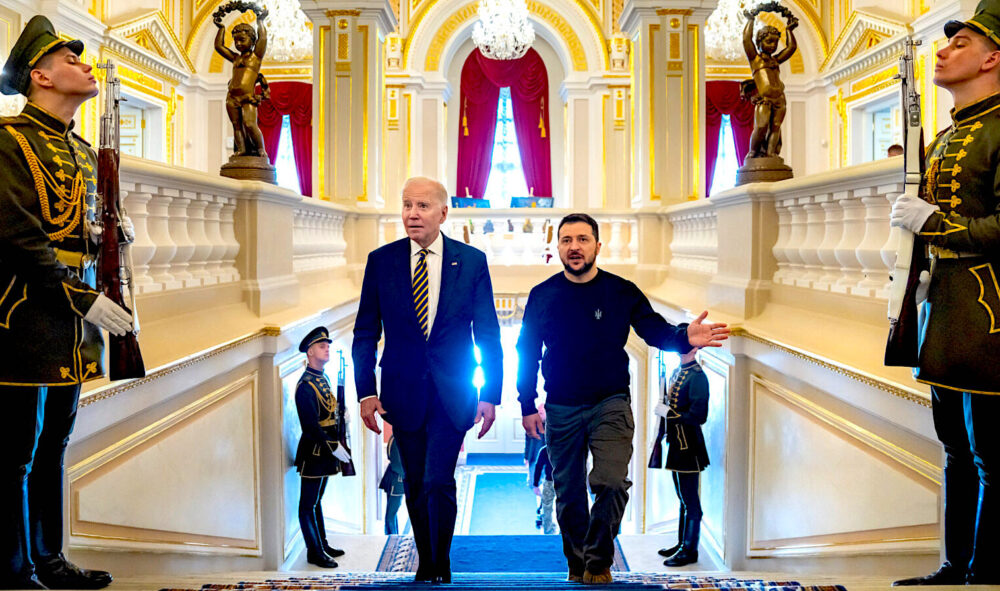



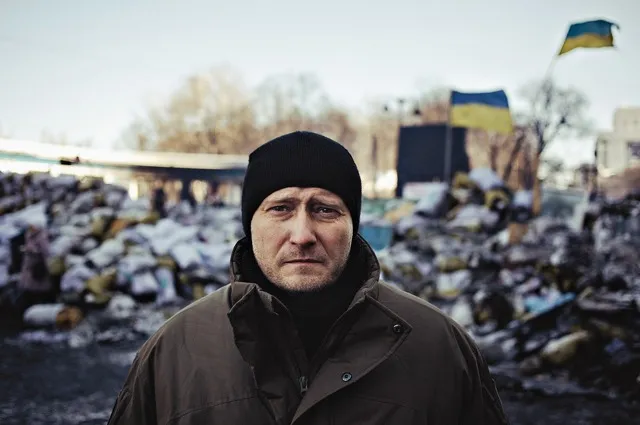



 SIMPLICIUS THE THINKER
SIMPLICIUS THE THINKER